A loop around Furnas Lake
The walk around Furnas Lake doesn’t need much of a plan. It’s a slow, half-day loop—flat, shaded, and atmospheric—with plenty of places to stop, sit, and wander slightly off-trail. The full path traces the perimeter of the crater lake, weaving between dense forest, open water, and pockets of geothermal activity.
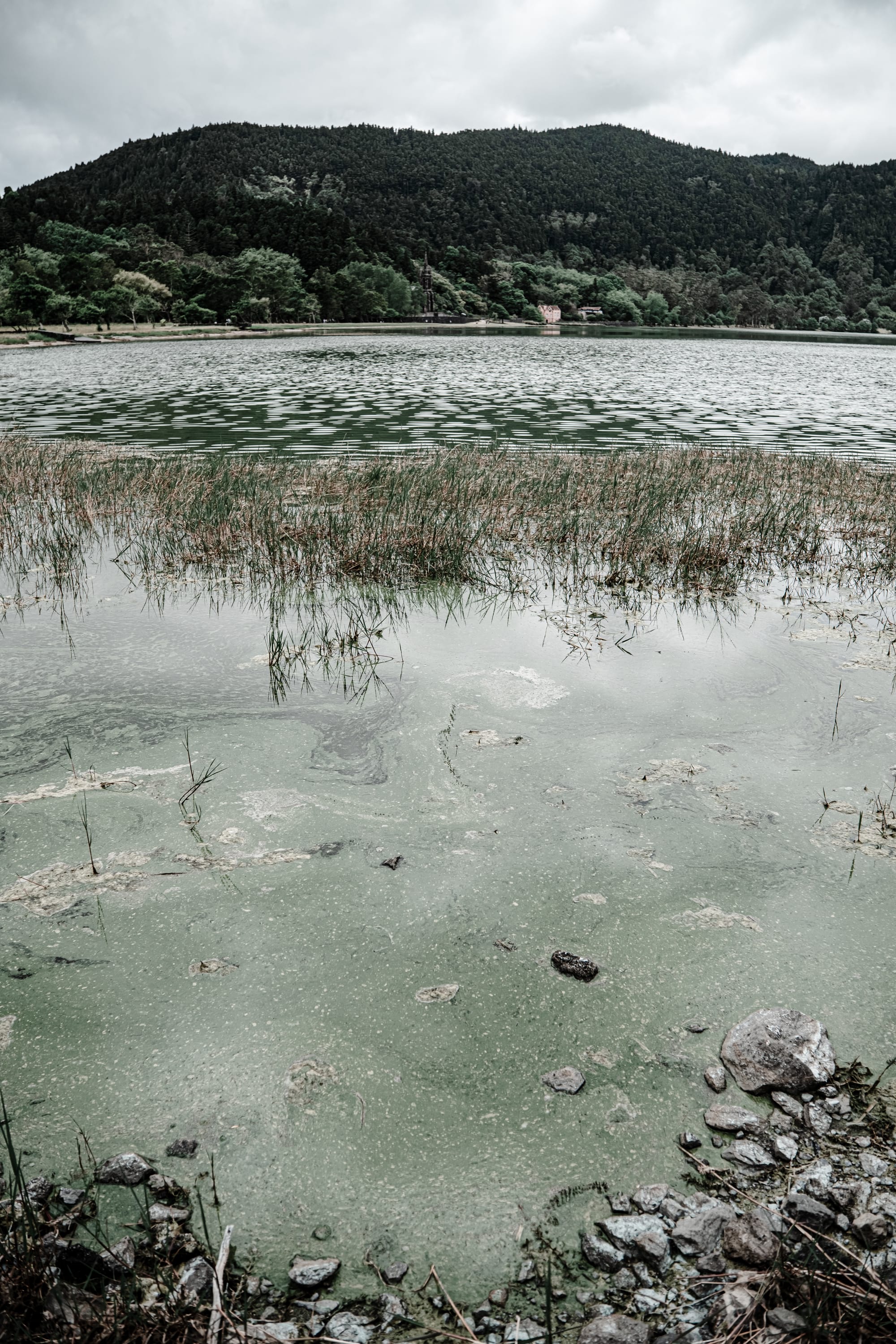
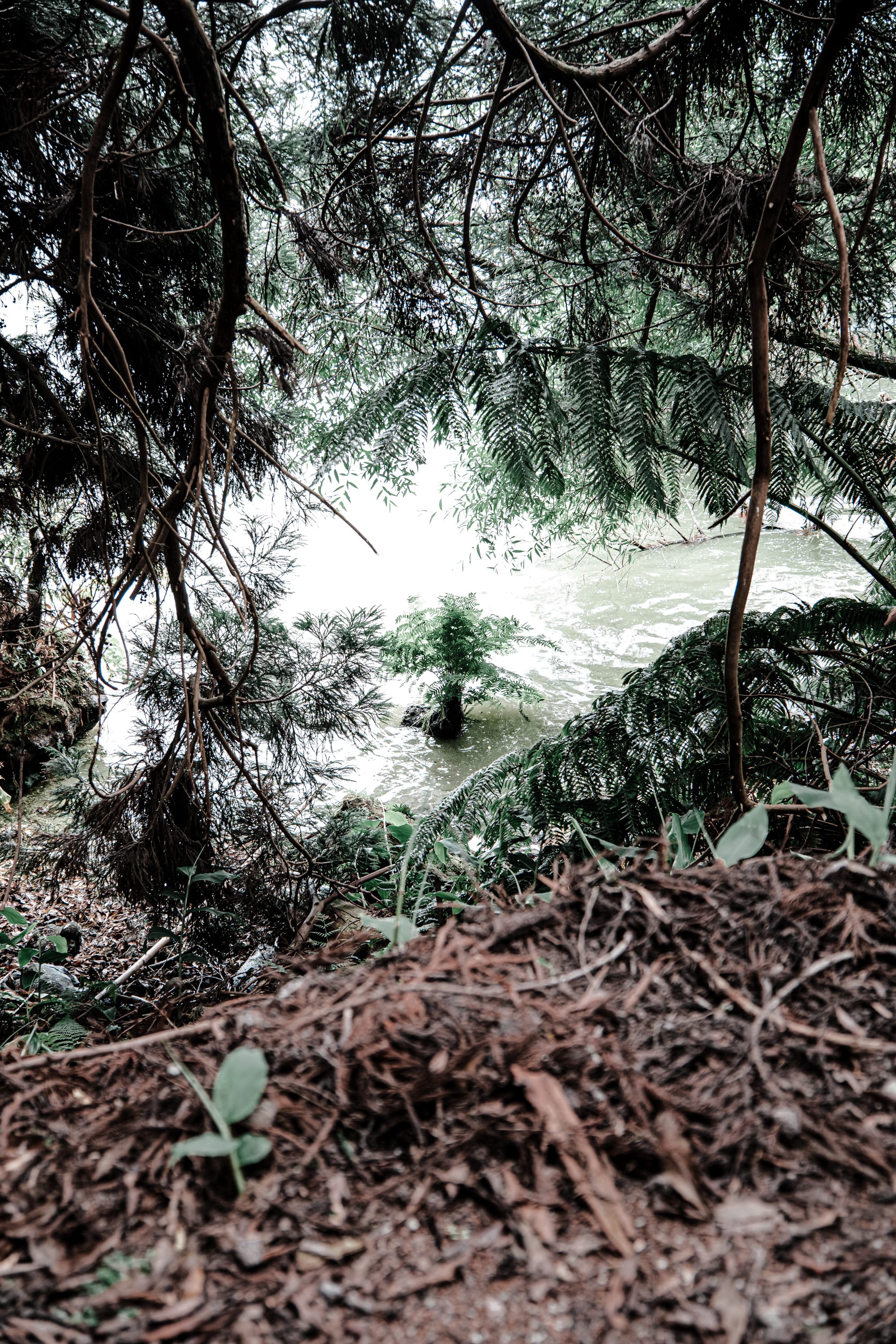
Edge views of Lagoa das Furnas, where reeds, runoff, and overhanging ferns trace the lake’s shifting shoreline
Start at any point. The route is continuous. What unfolds is less a hike than a shifting field of textures: volcanic mud, pine needles, boardwalk, moss.
From steam to stillness
Near the trailhead closest to the caldeiras, the smell of sulfur hangs in the air. Steam rises steadily from the earth, trailing off into wet sky. The ground here is soft and warm, patchy with lichen and trampled grass. Nearby, a wide clearing opens toward the lake’s edge, where locals lower iron pots into steaming holes in the earth—cozido slow-cooking under soil.
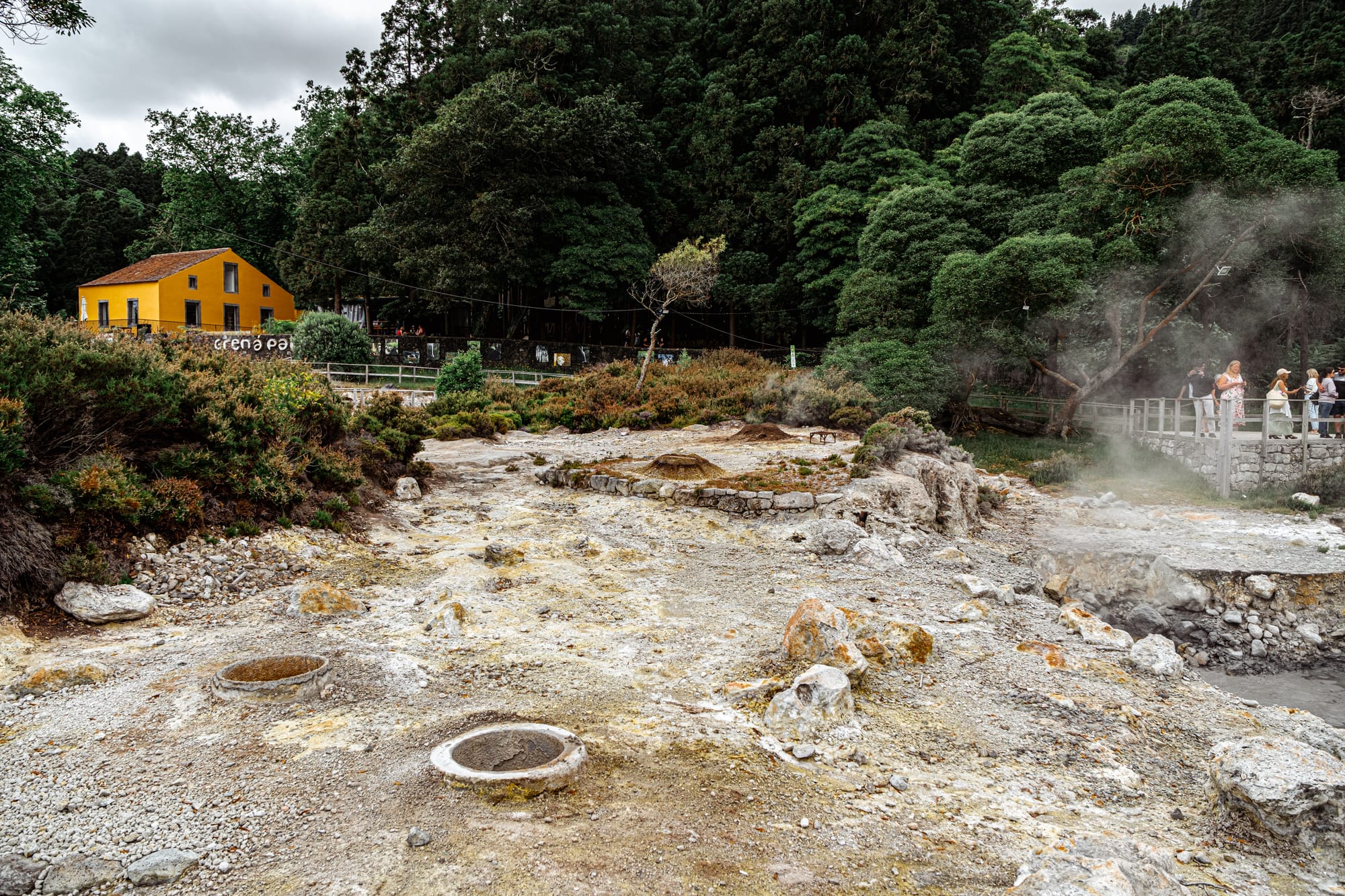
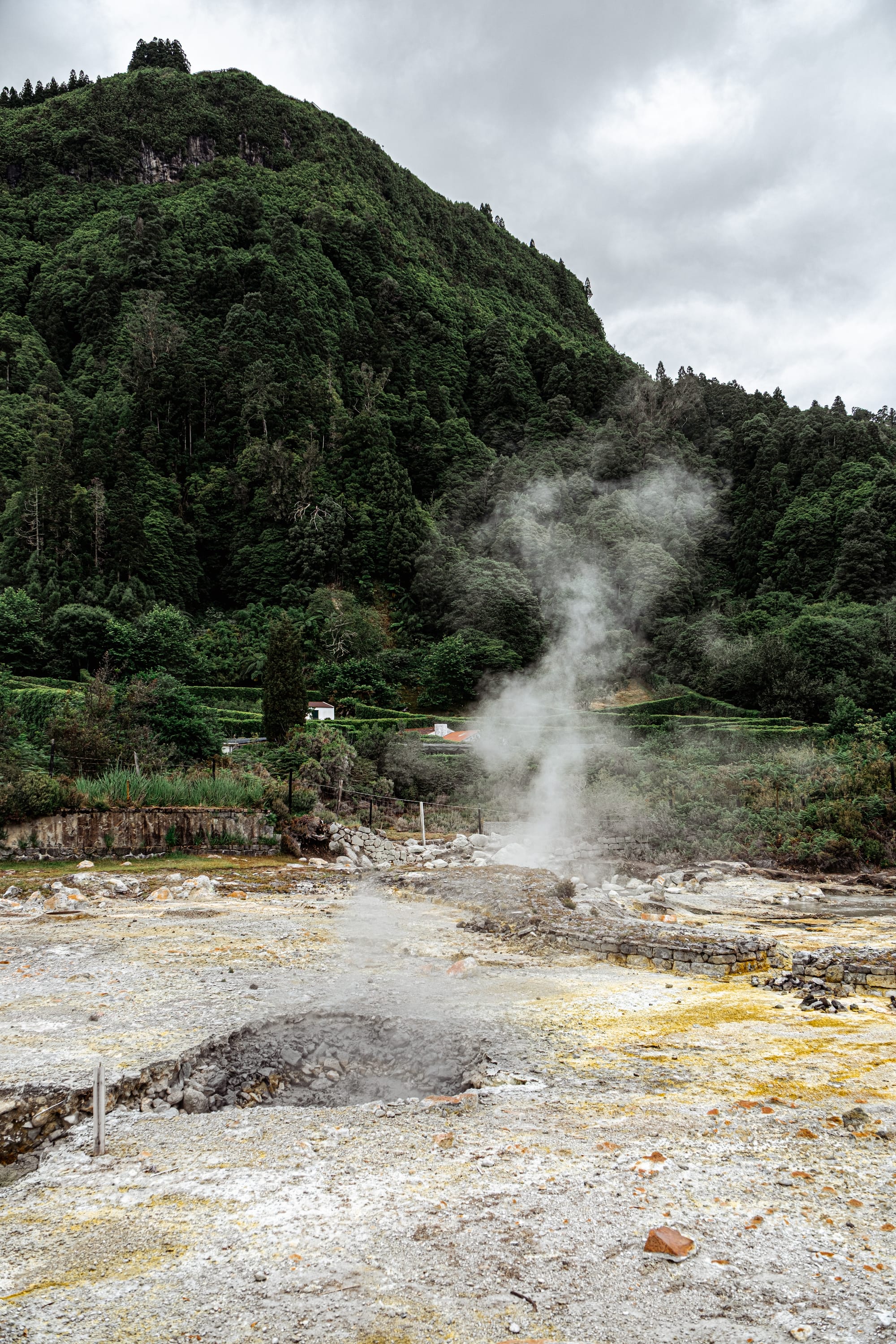
Geothermal vents and cozido cooking pits at Furnas, where steam rises from sulfur-streaked earth beneath dense volcanic forest
The lake surface stays mostly still. It’s pale, milky green, occasionally streaked with darker patches of wind. Along the shoreline, purple agapanthus and stone pines frame views across the water. Ducks move quietly in single file, threading lines through reflection.
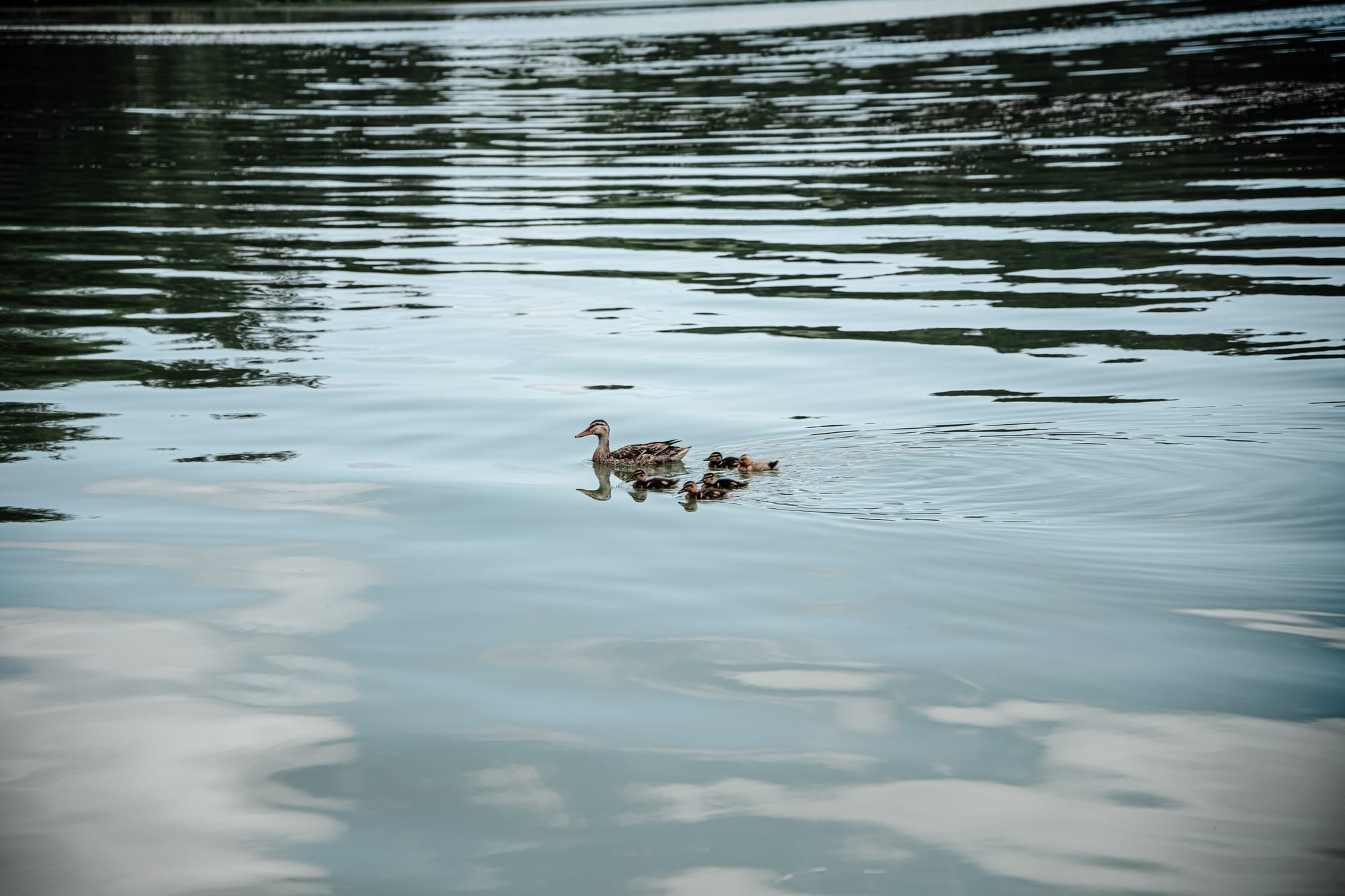
Later in the loop, a cluster of ducklings follows their mother through a patch of sunlit ripples.
Tree forms and microclimates
The path winds on through distinct ecological pockets. In one stretch, a grove of towering Japanese cedars rises close to the trail—straight and dense, with high, symmetrical limbs. The bark ranges from soft gray to orange-brown, each trunk slightly flared at the base, like the stance of a dancer. Needles scatter across the trail, creating soft footing that smells of resin and rainfall.
In another section, the trail skirts bamboo groves—dense, rhythmic, swaying slightly in the breeze. Their green is deep and layered, almost architectural in how it organizes space. Some are bright and fresh, others older, bleached to silver. A low fence holds back the undergrowth, covered in vines and wild jasmine. The scent here is sweet and sharp.
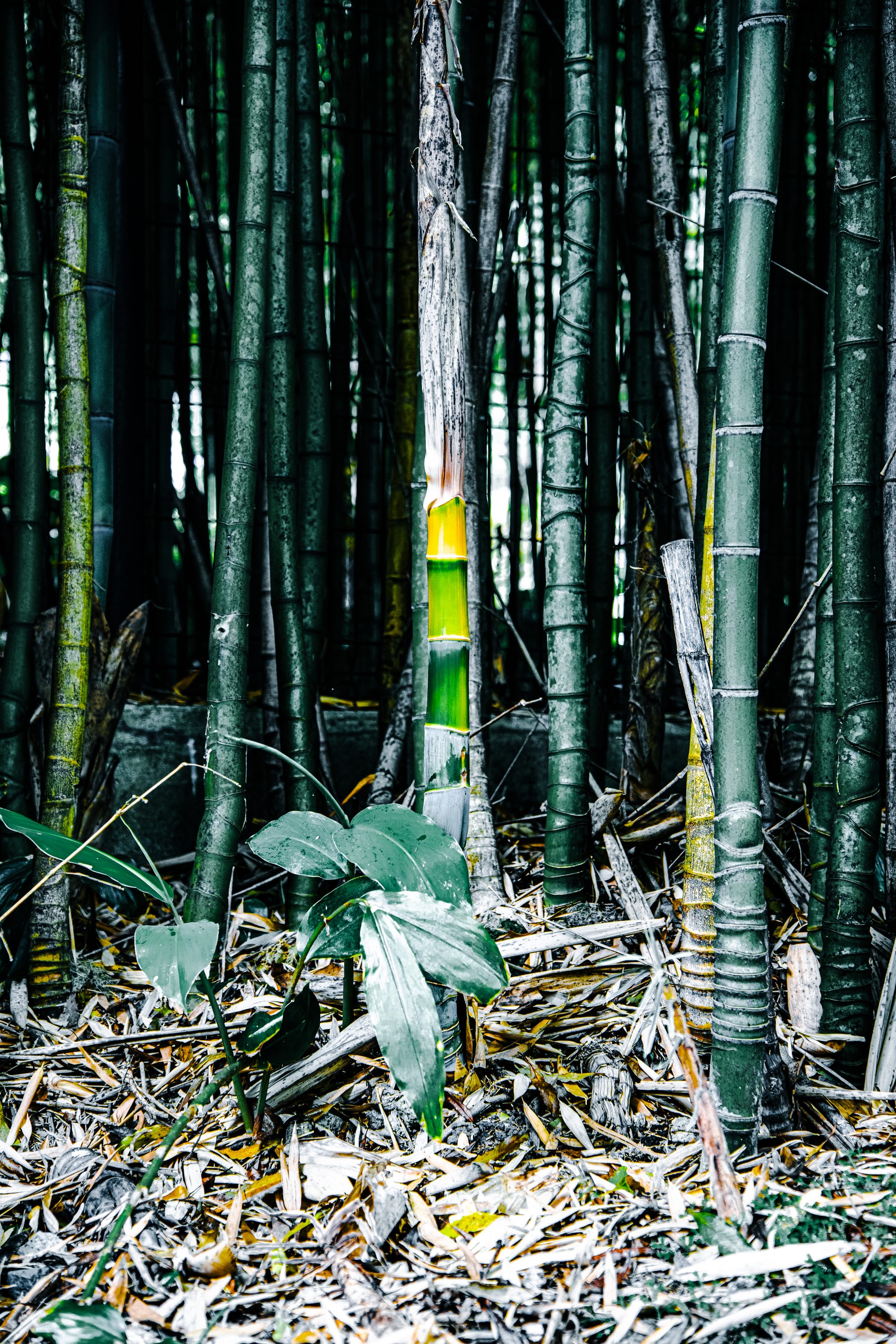
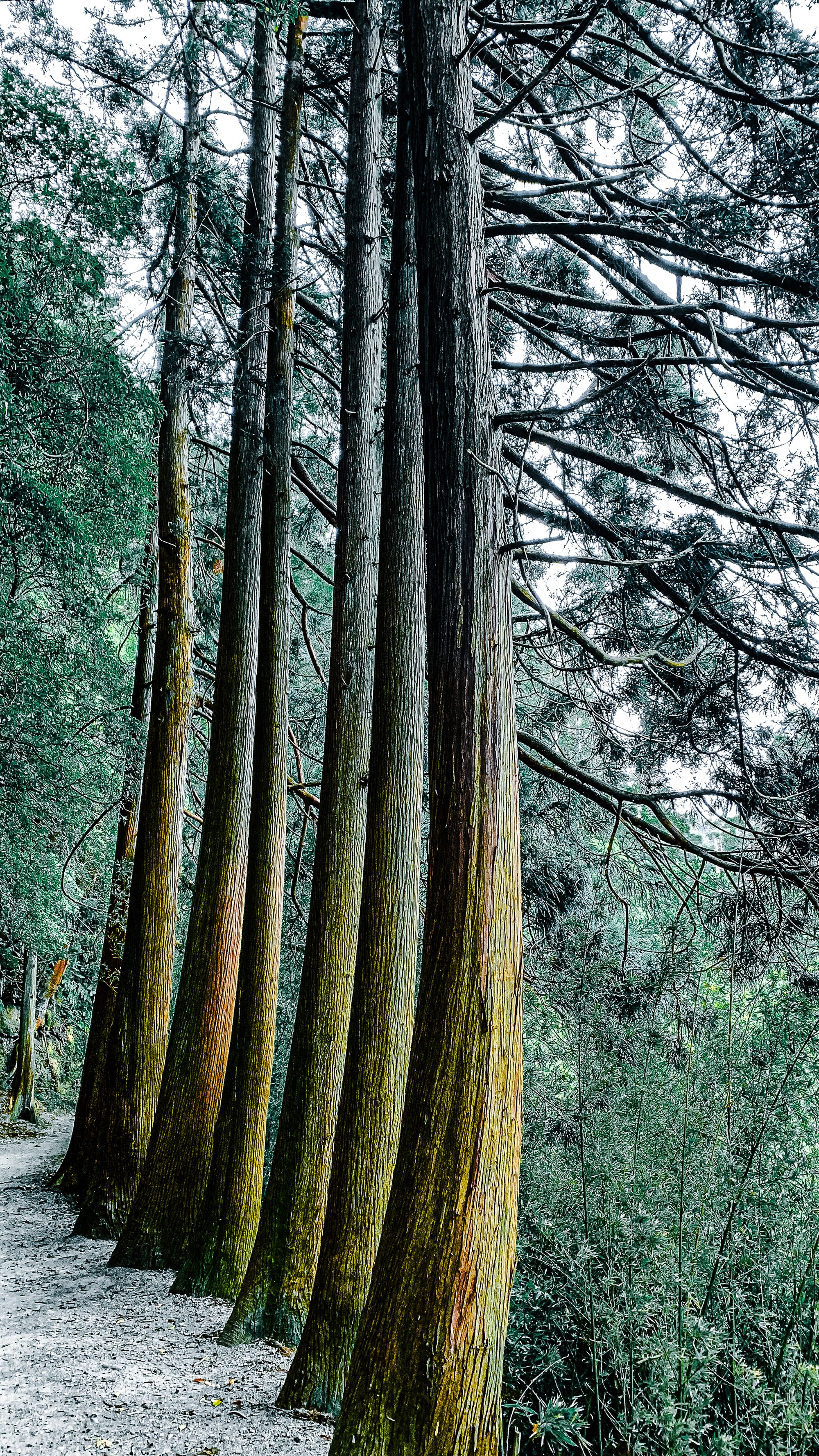
Shifting biomes along the loop trail—bamboo thickets give way to towering Japanese cedars
Elsewhere: eucalyptus stripped smooth, climbing ivy pulled high along pale trunks, scattered undergrowth of ginger, fern, and moss.
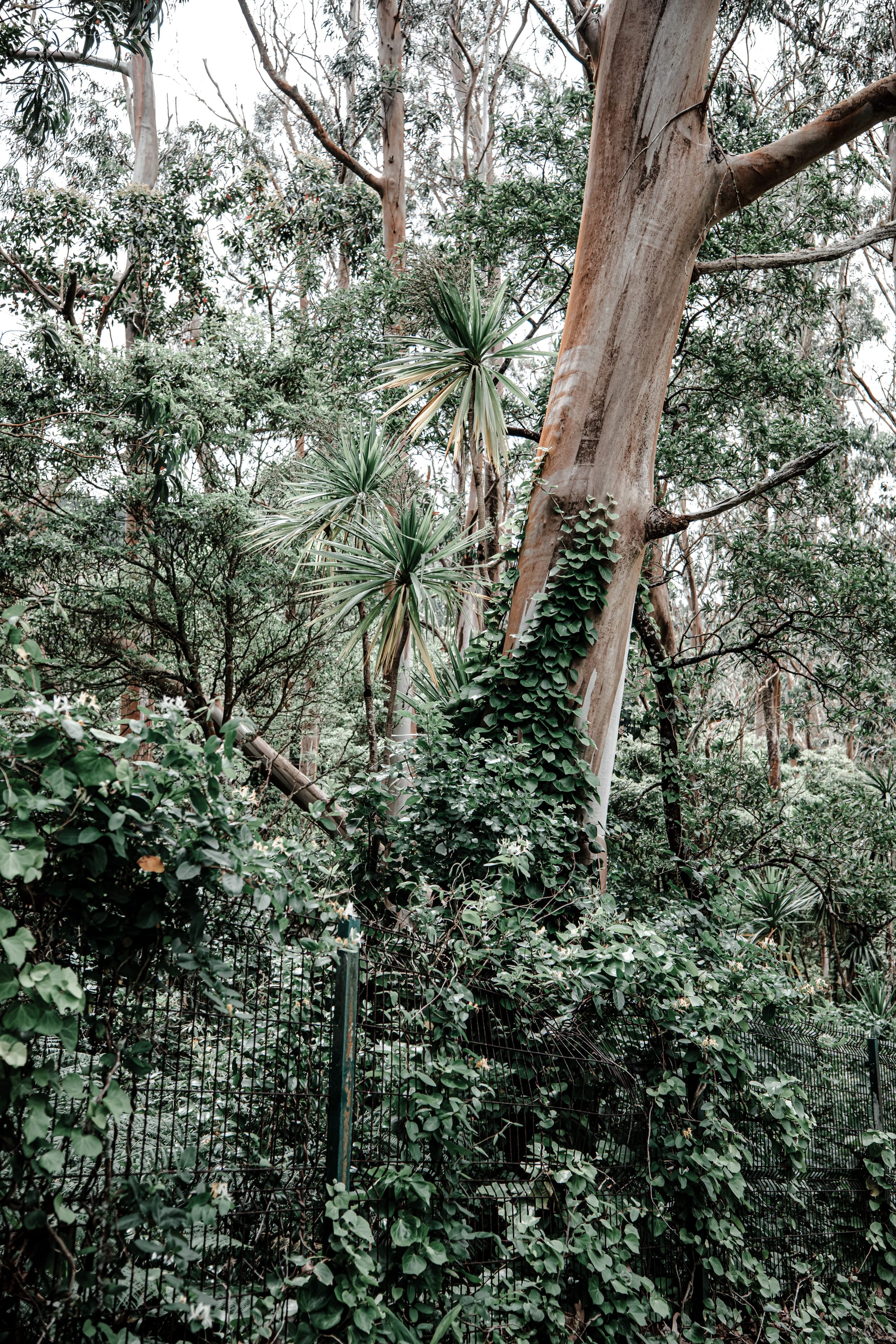
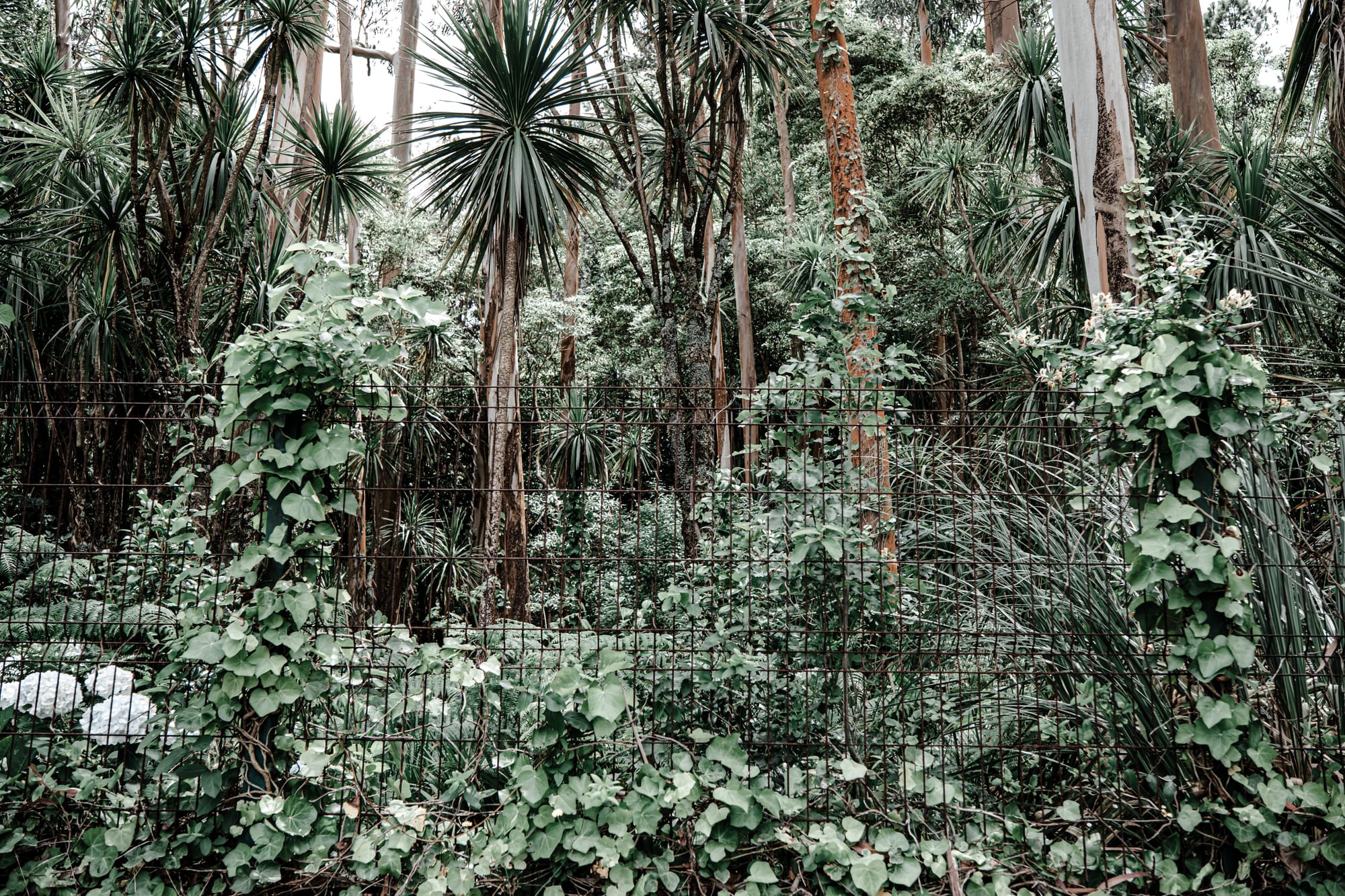
Vines climb eucalyptus trunks and wire fencing as dracaena palms cluster in the undergrowth
The terrain changes often but subtly. What remains constant is the saturation of green—deep, wet, uninterrupted.
The gothic chapel
About halfway around the lake stands the Capela de Nossa Senhora das Vitórias. Built in the late 19th century in memory of a lost wife, it’s sharp-edged and solitary—tall spire, dark stone, narrow windows. Moss softens its base. The reddish volcanic rock is mottled with lichen and streaks of black where rain has gathered and run.
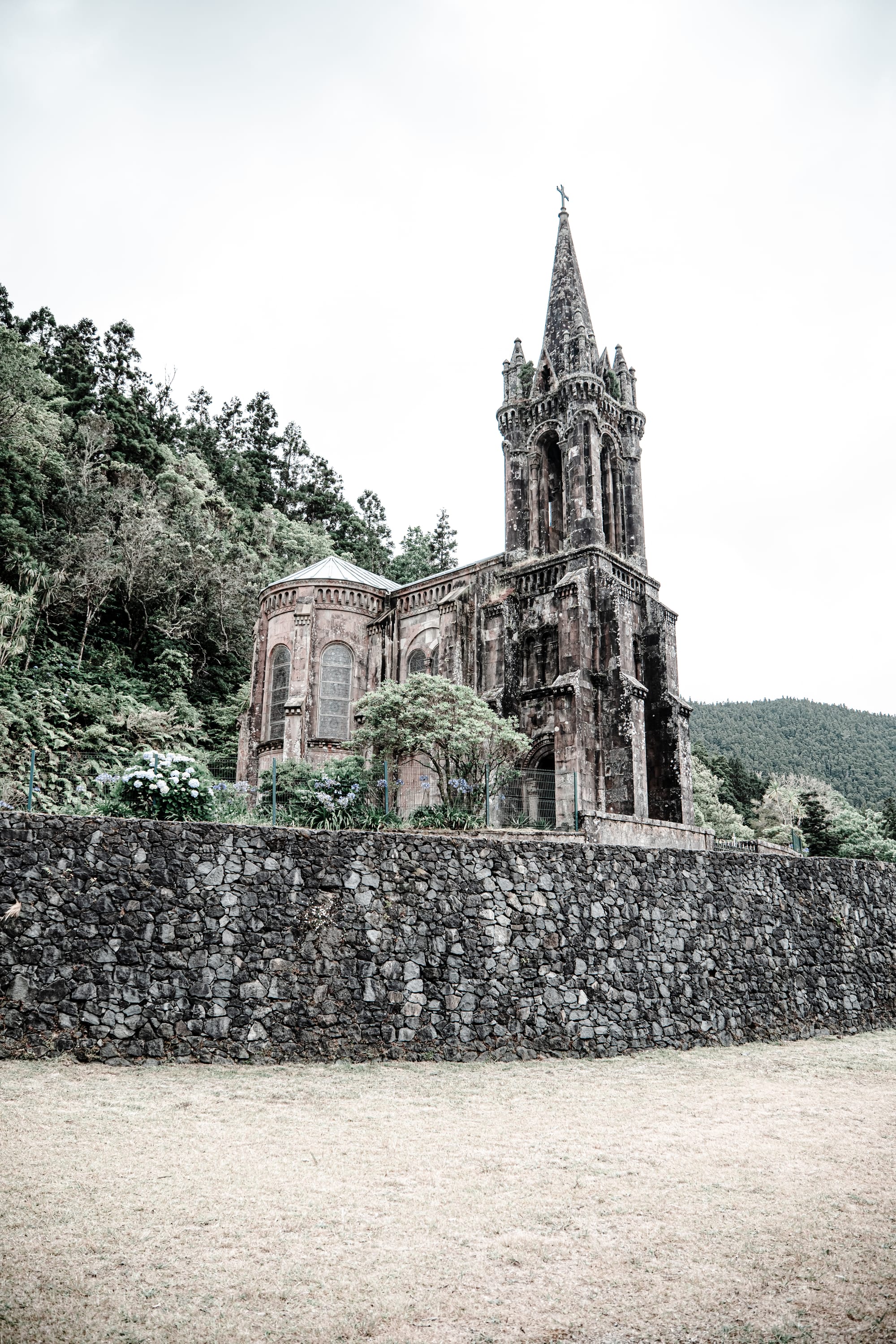
Inside, if open, the space is dim and hushed. Light filters through tall windows, casting soft pools across the basalt floor. From the outside, the chapel’s reflection sometimes doubles in the lake—distorted but legible.
The chapel marks a kind of midpoint—psychologically if not spatially. It’s a place to pause. There’s a bench nearby. Hydrangeas grow along the slope. The water is quieter here.
A swing, a treetop park, a basalt facade
The path continues through more forest. At one point, a wooden bench-swing hangs from a thick branch, suspended just off the ground. It’s not marked. It just appears—an invitation. The ropes are slightly frayed. The ground below is packed earth and pine needle.
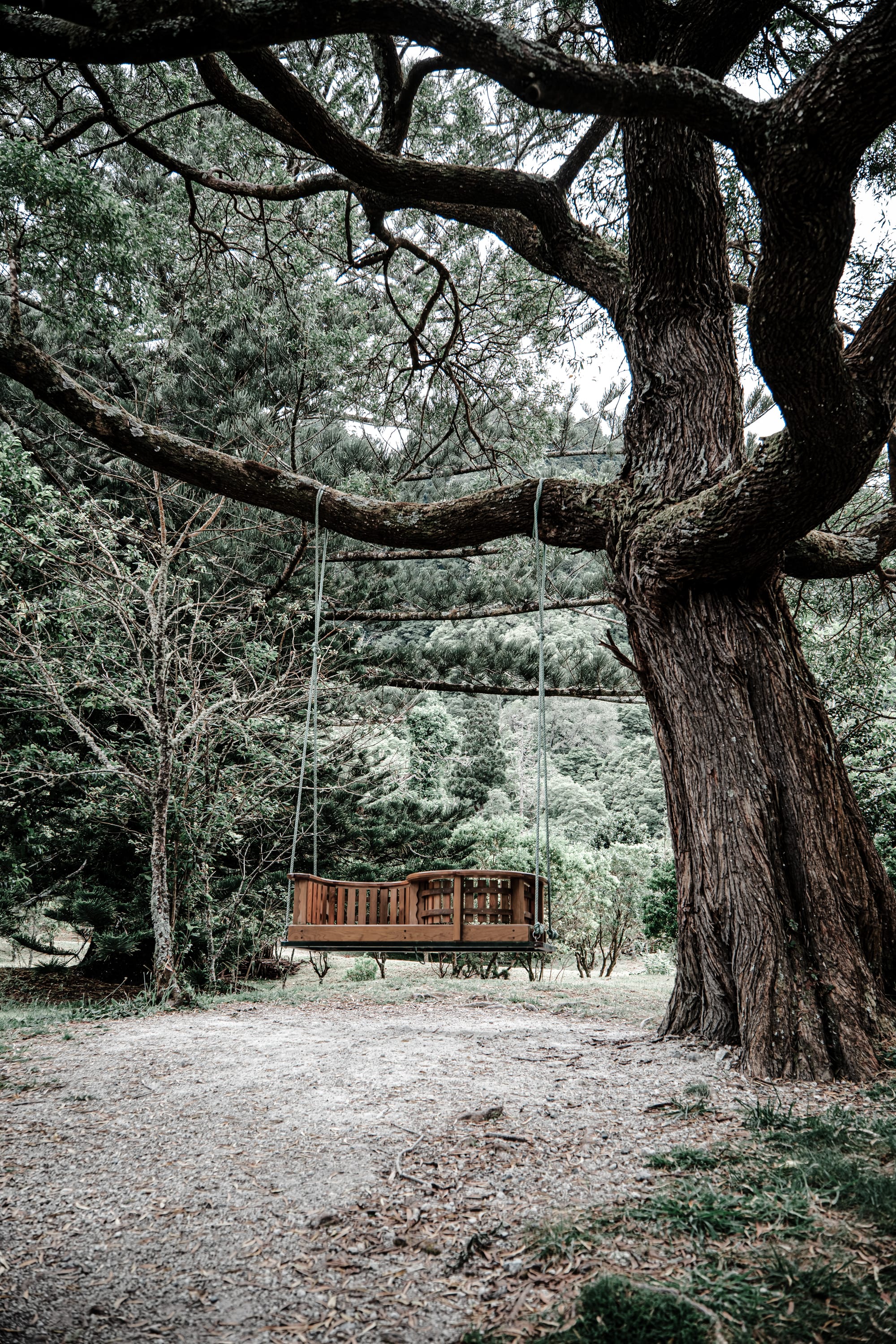
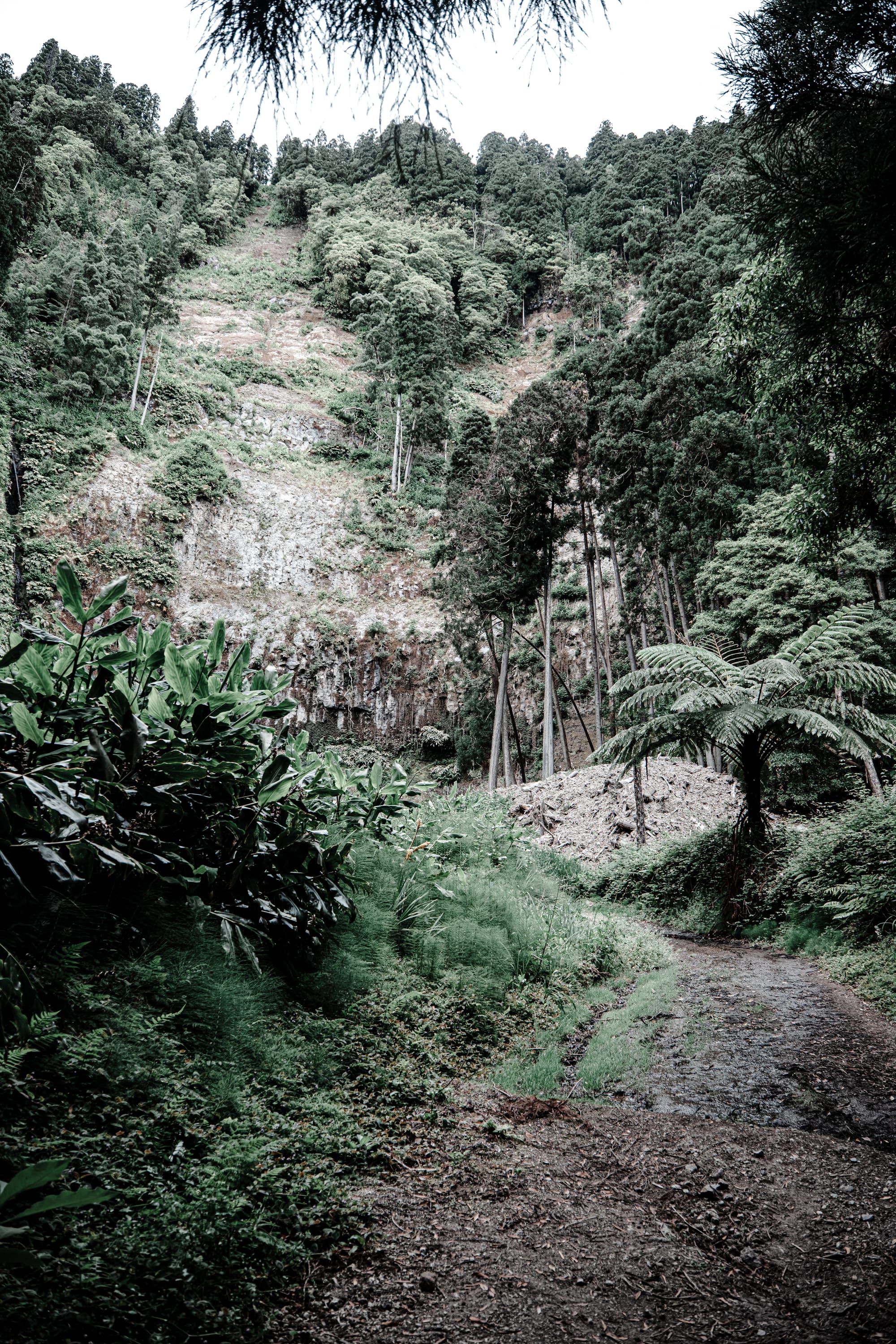
Woodland moments along the Furnas trail—an oversized swing under pine branches and a fern-lined path skirting volcanic rock
Further on, a modern basalt visitor center sits back from the path. Its facade is patterned in soft grayscale—dark stone bricks laid in clean horizontal bands.
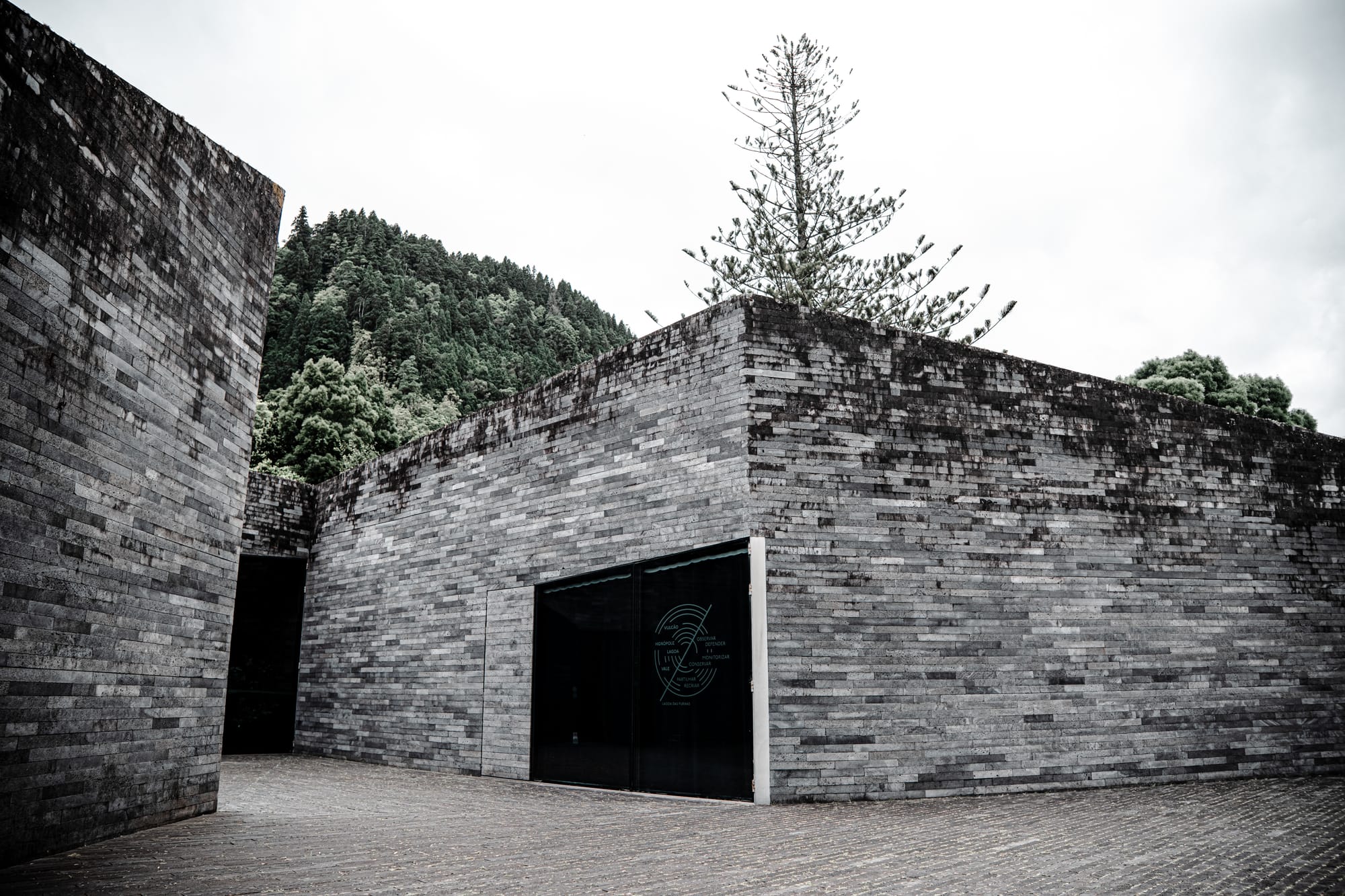
A lone pine rises behind it, framed perfectly by the open space between walls. In contrast to the lake’s older architecture, it feels quiet, unannounced.
Then the trees grow taller and the ropes appear—Azores Treetop Park. Nets, ladders, cables drawn between trunks.
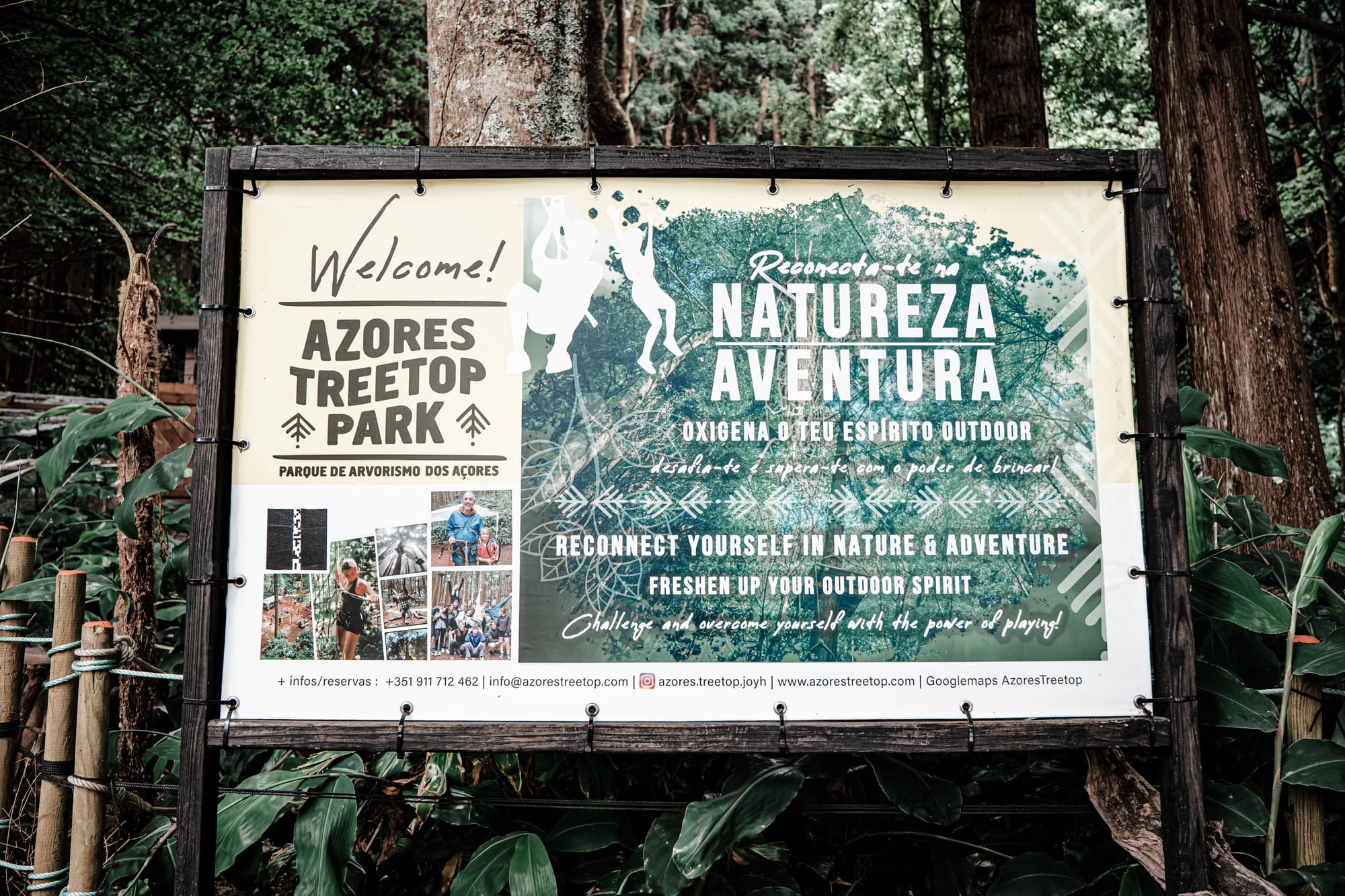
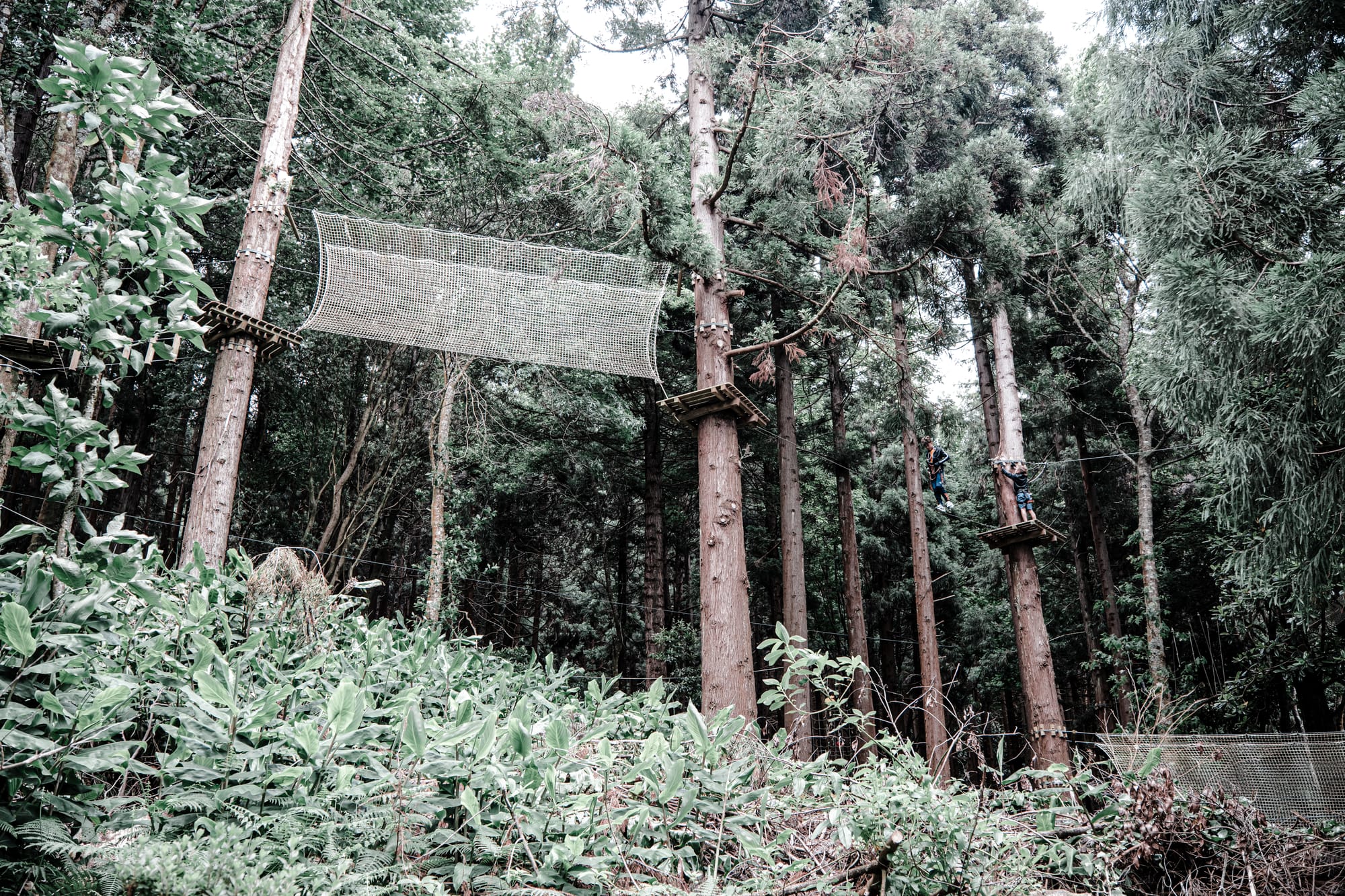
Tree canopy swings and zip lines await at Azores Treetop Park, nestled just off the Furnas Lake hiking loop
A child’s yell echoes through the canopy. Platforms hug tree trunks high above. Some people move between them; others watch from the ground. The structures are simple and integrated—wooden, rope, unobtrusive. It feels like a temporary village suspended in trees.
Lakeside plants and subtle movement
Return to the path and the lake comes back into view. Along the edge, thick reeds rise from shallow water. Tiny fish move in darting bursts near the surface. From the bank, the water looks both murky and reflective—greens and browns overlaid with pale sky.
There are flowers tucked into unlikely corners—low agapanthus, white lilies near the waterline, and sudden bursts of hydrangea in purple, pink, or blue. Ferns grow wide and flat along the edges, and their fronds brush lightly against your legs if you step off-trail.
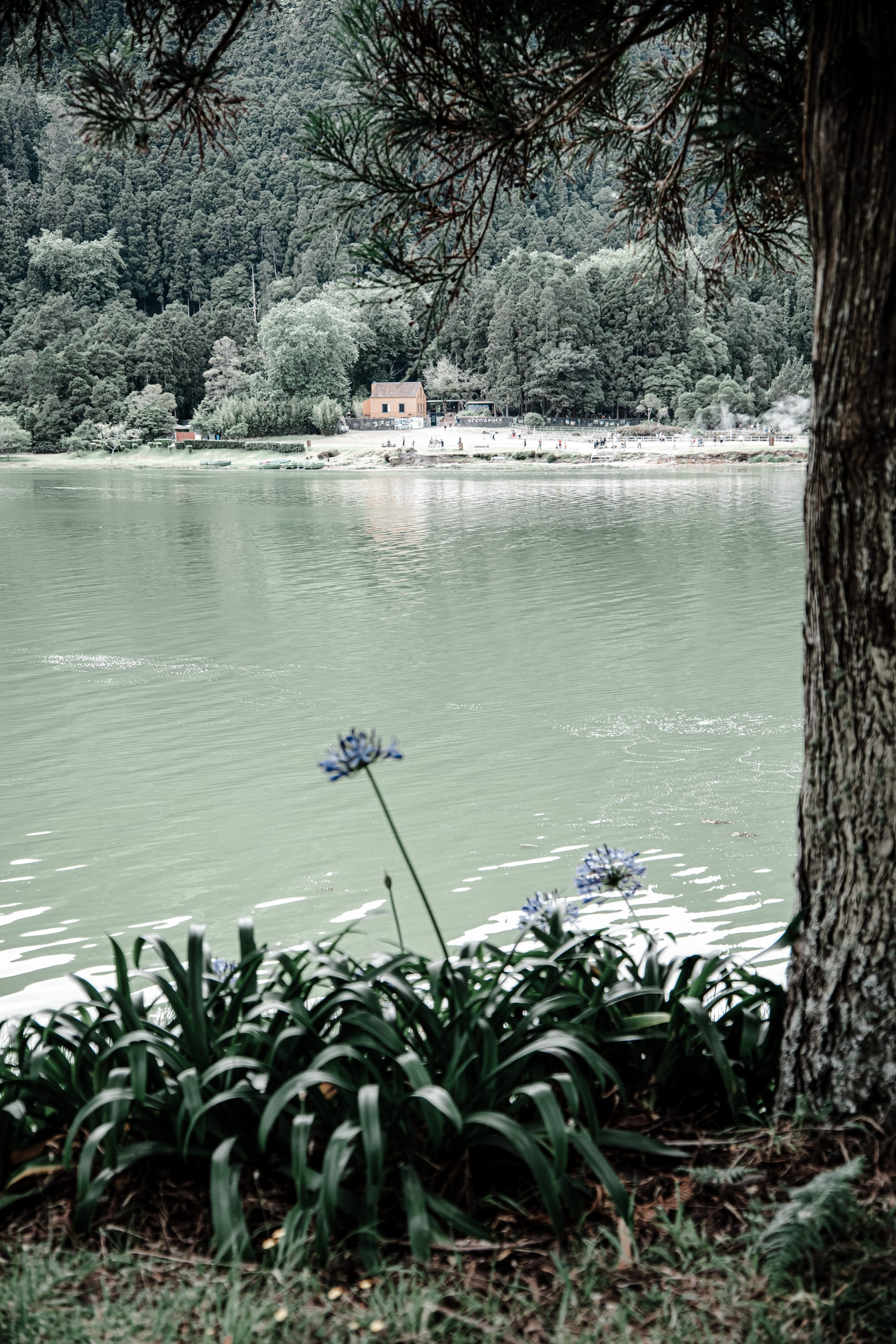
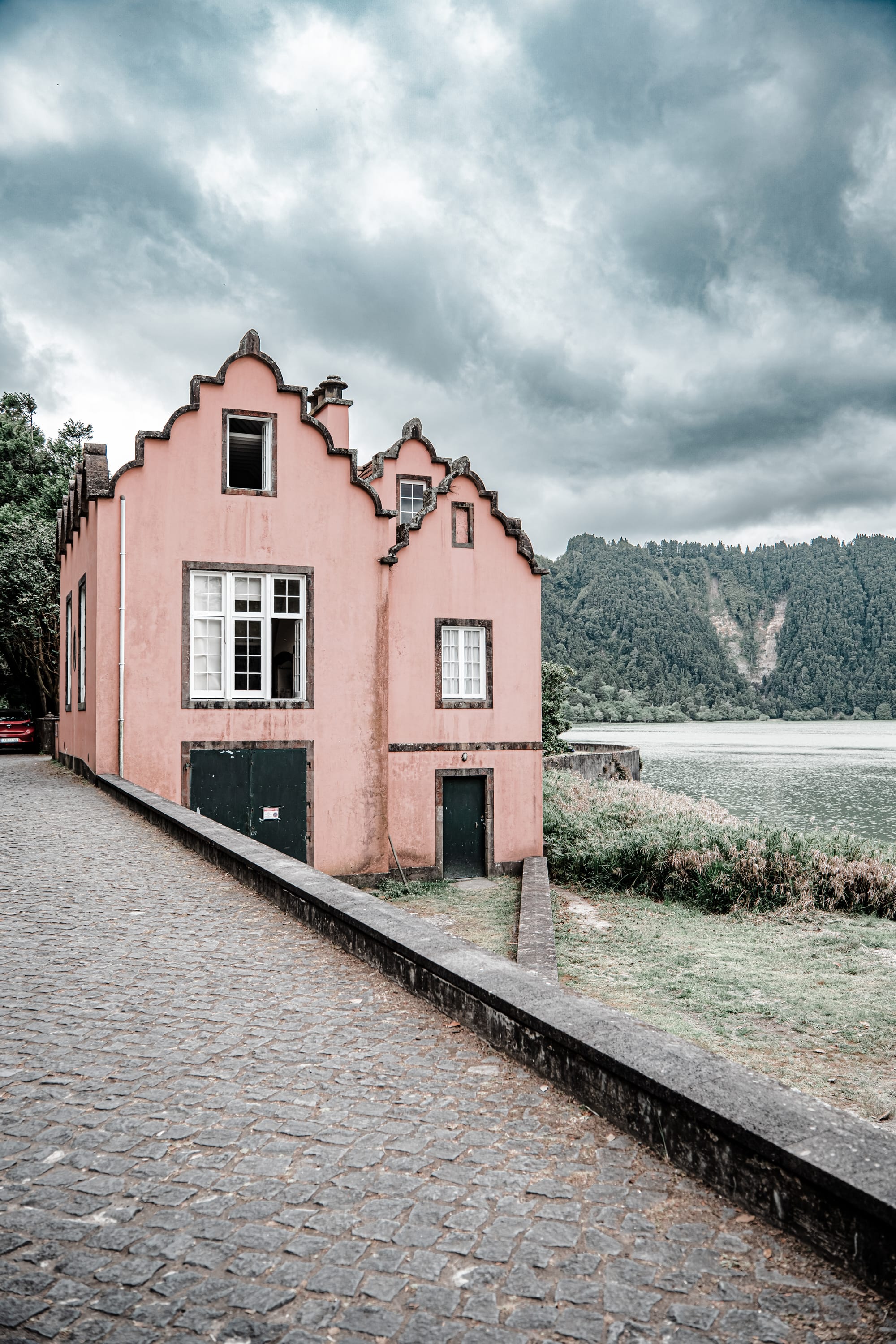
Lakeside geothermal fields and pastel Portuguese architecture offer striking contrast to the forested crater walls
A carved wooden sculpture, worn and darkened by weather, sits at the base of a tree stump, watching the path.
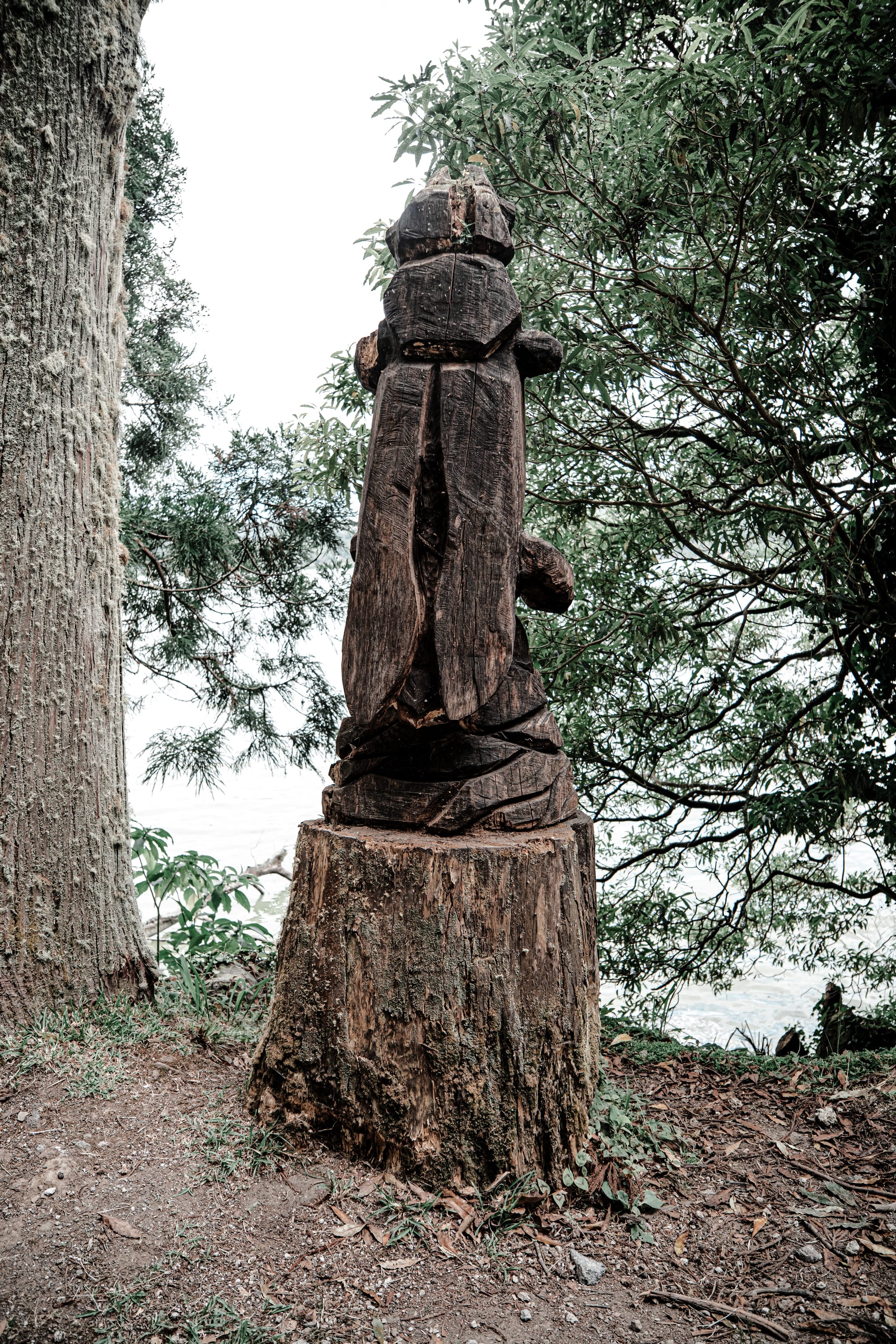
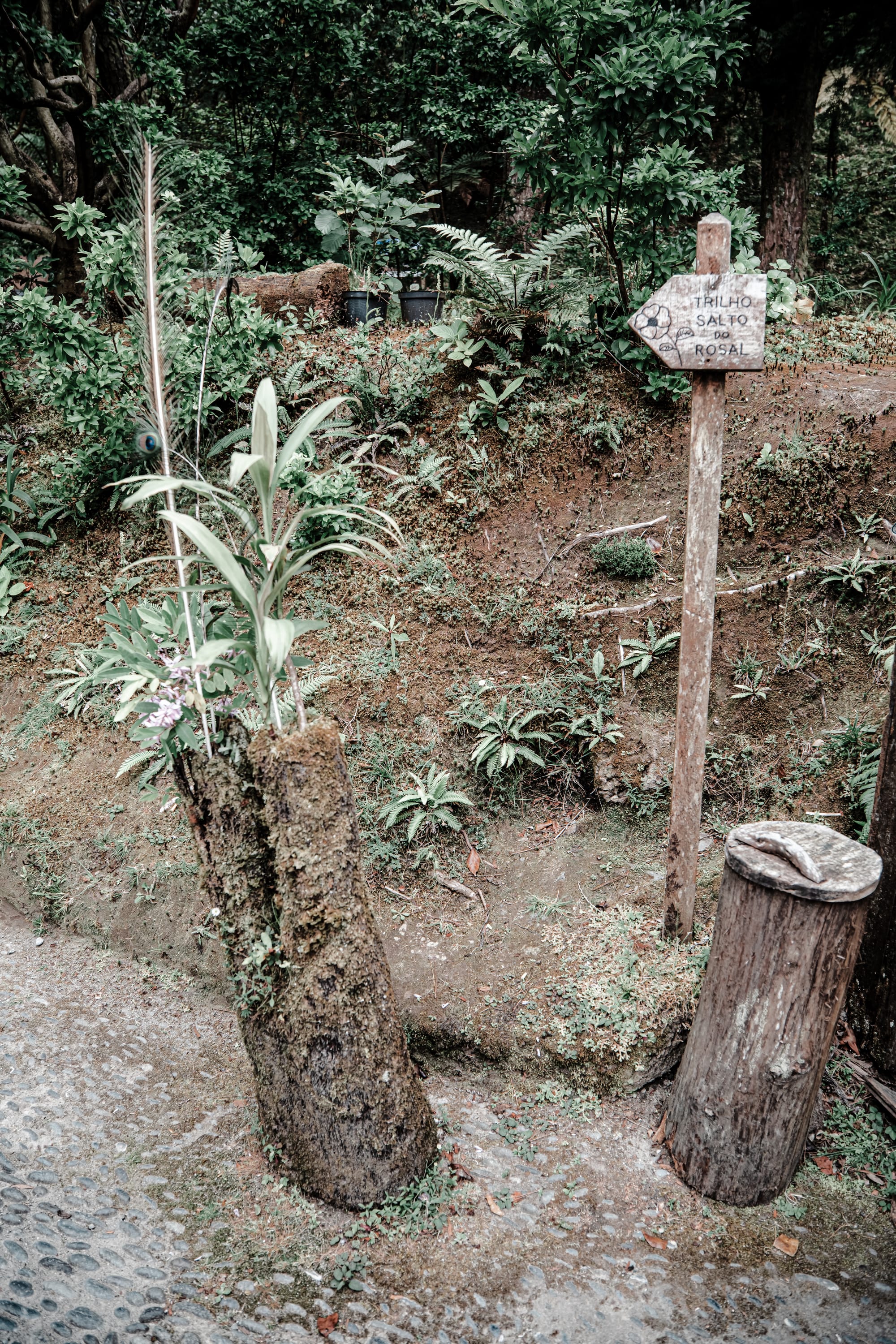
Hand-carved trail markers and mossy signposts hint at the layered human presence throughout the Furnas Lake forest paths
It’s stylized, almost abstract—a gesture more than a figure. Beside it, the lake opens again.
Grená Park and a quieter edge
Toward the eastern end of the lake, just off the main loop, a small path leads to the entry of Grená Park. You might miss it if not looking closely. The entrance is marked by a simple carved wooden sign and a tall, rust-colored gate made from weathered steel—modern in design but softened by the forest around it. A low stone wall borders one side, covered in lichen and green moss.
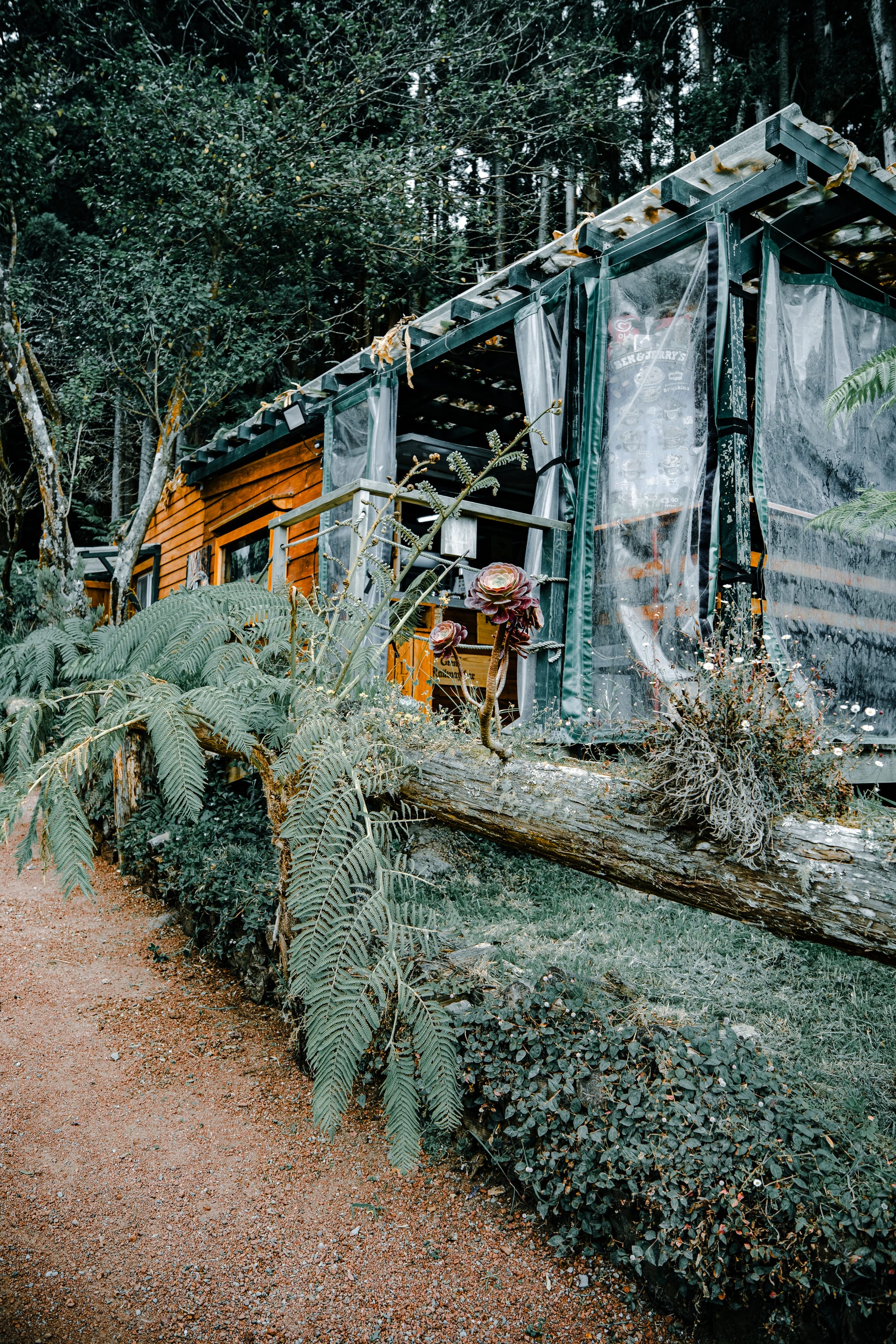
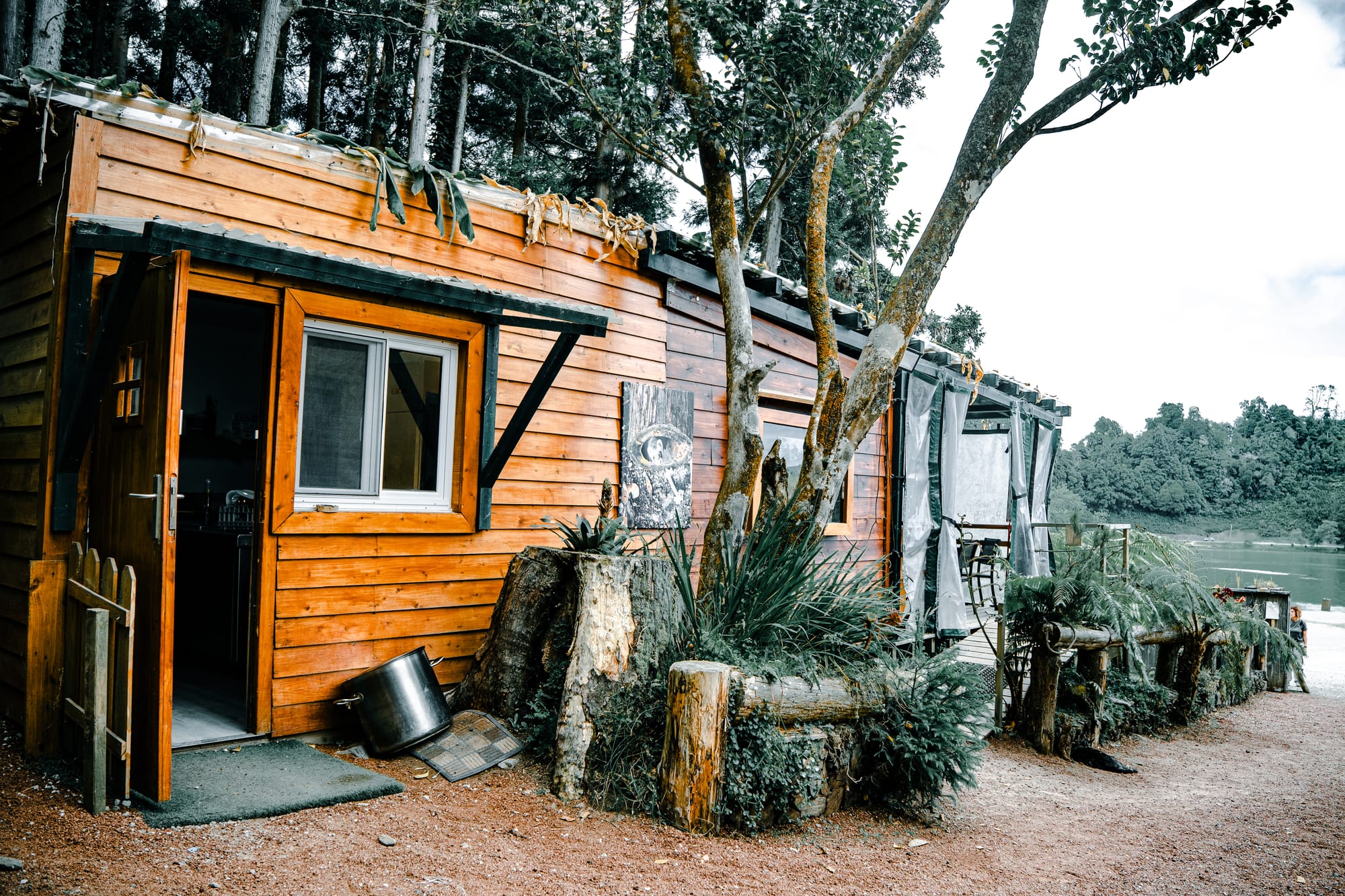
A wooden cabin restaurant tucked along the trail, surrounded by ferns, succulents, and volcanic soil.
Even without entering the full trail network, this edge of Grená offers a shift in atmosphere. The slope is steeper, the canopy darker, and the air heavier with the scent of wild ginger and damp leaf. Just beyond the gate, large-leafed ferns cascade down the bank, their undersides dusty white. The forest floor is soft with fallen magnolia petals and red pine needles. A narrow stream cuts through the path, with stone footings placed like stepping stones.
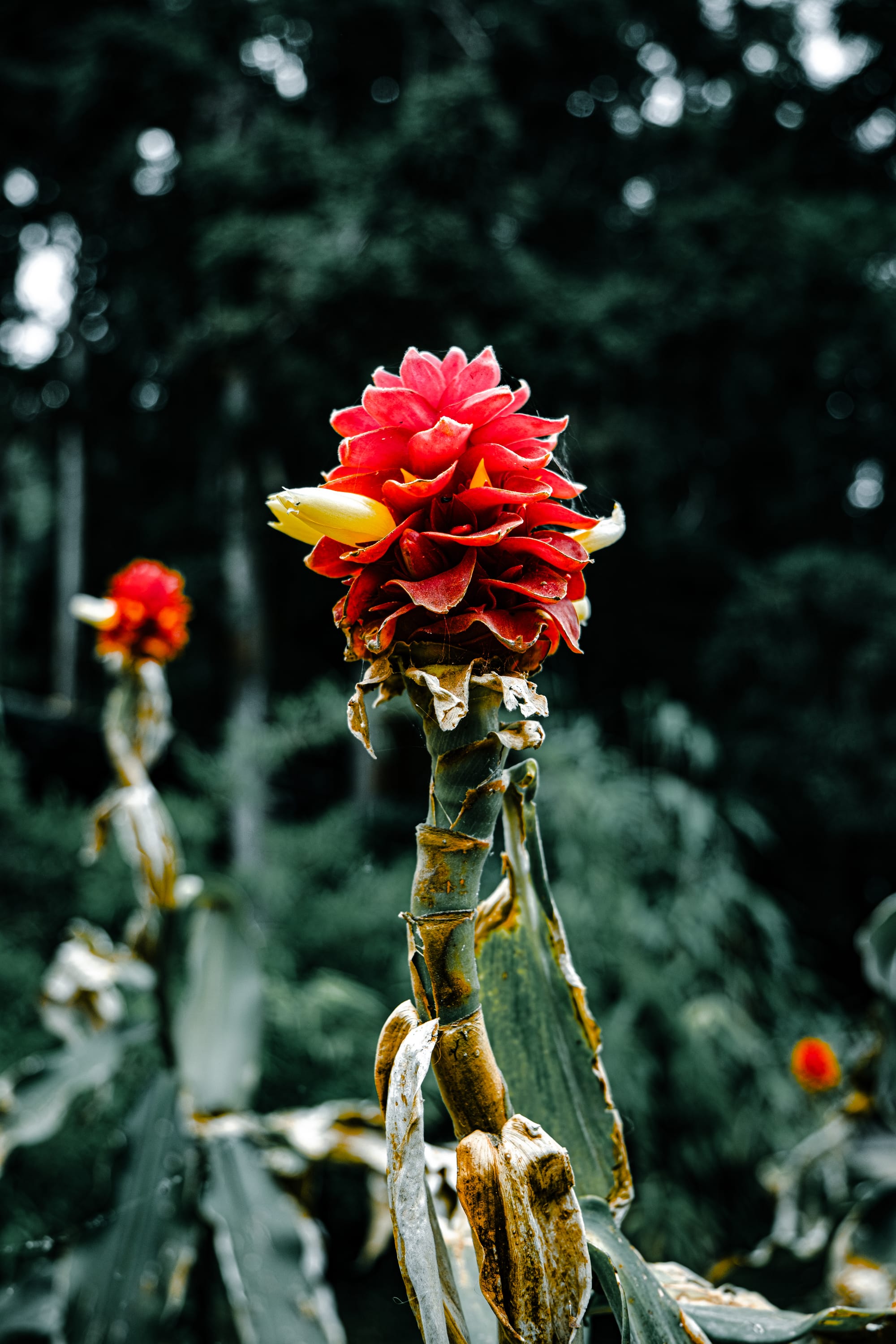
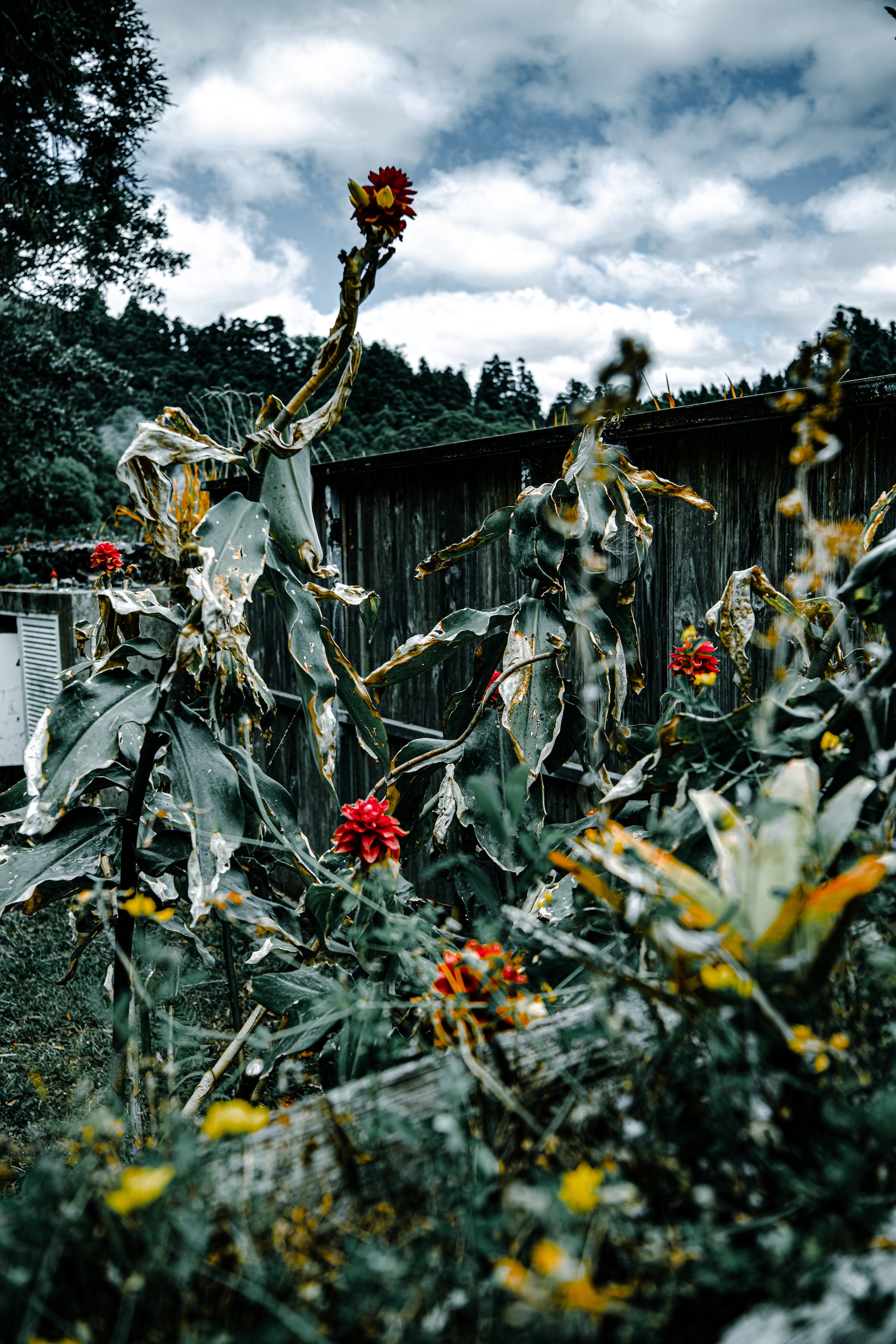
Wax ginger in full bloom, their red bracts and waxy stalks adding surreal bursts of color to the forested path
Grená Park hosts a series of less-traveled trails that wind through denser forest—marked by stretches of sweet chestnut, tall Cryptomeria japonica, and tangled understory. There are banks of flowering wild garlic (Allium ursinum), long ribbons of canna lilies in deep orange and crimson, and occasional flashes of calla lilies emerging from shadow. Closer to the gate, red-hot pokers (Kniphofia uvaria) bloom upright beside clusters of pale pink trumpet-shaped flowers, possibly Brugmansia.
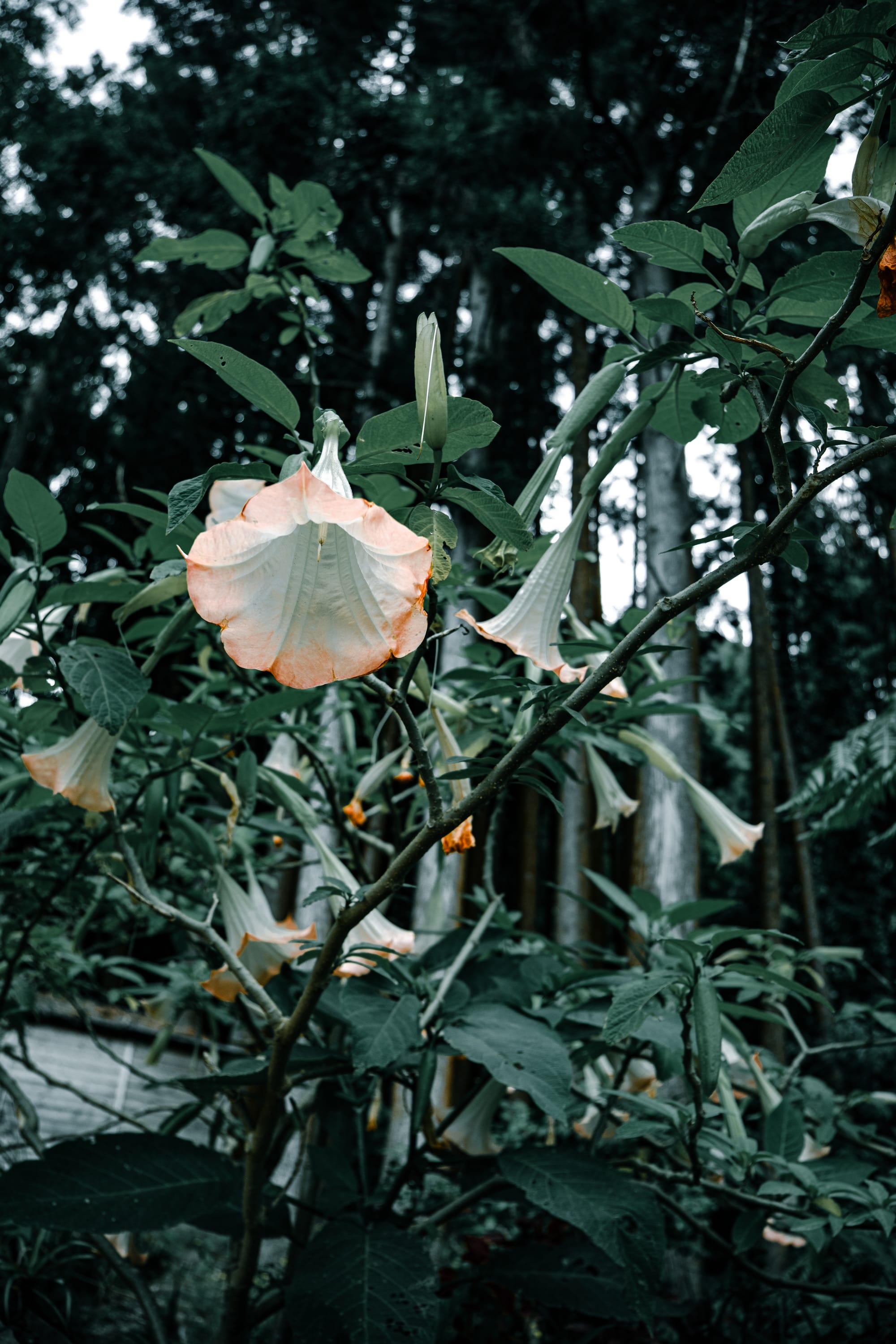
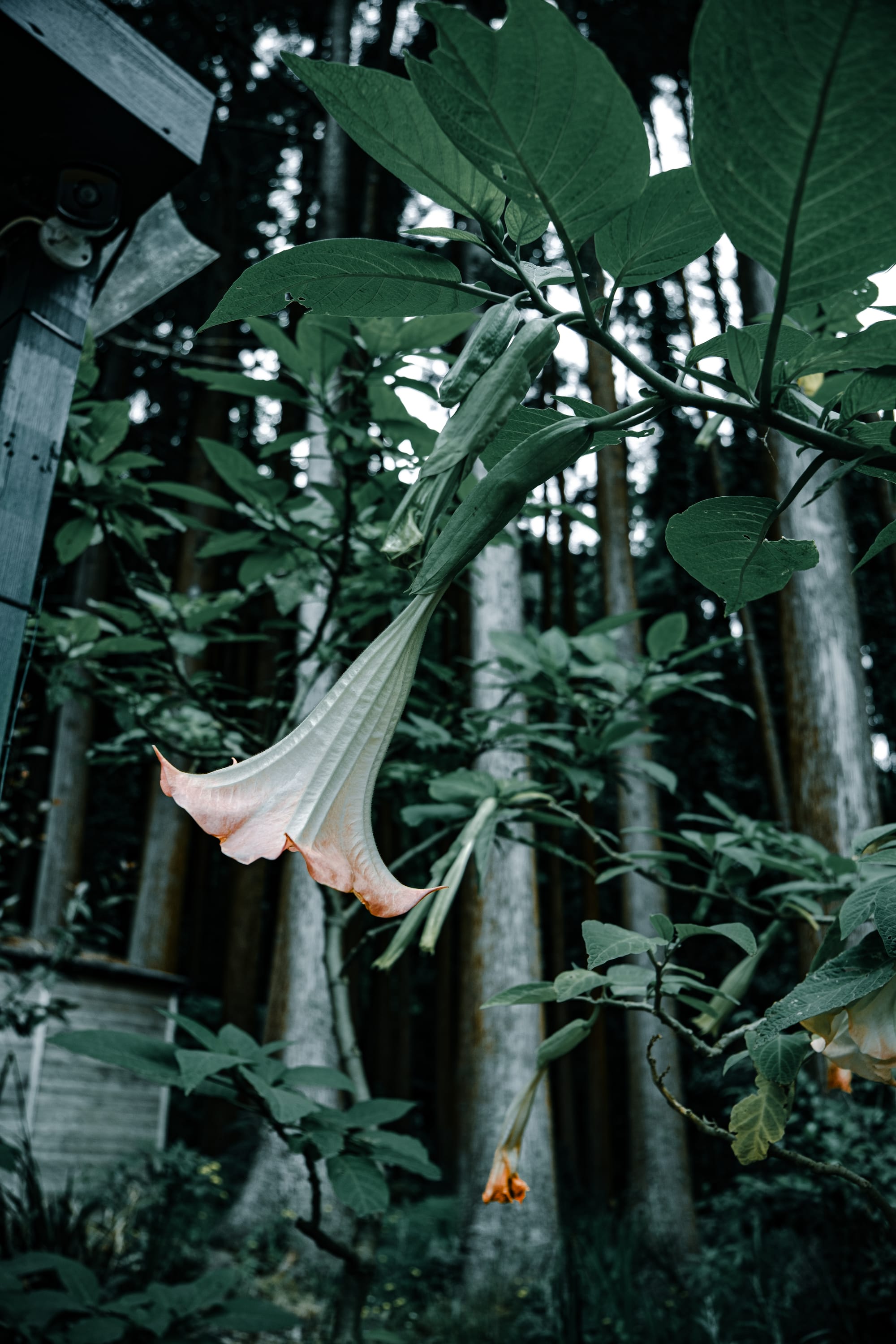
Blooms hang like pale trumpets, their delicate peach-tinged edges softening the dark geometry of the forest behind them
A solitary echium tower—deep indigo, cone-shaped—rises above a patch of succulents. Lavender spikes cluster beneath a slope near the path. The flowering is layered here, never ornamental but integrated—woven into the slope, the shade, the rhythm of the stone.
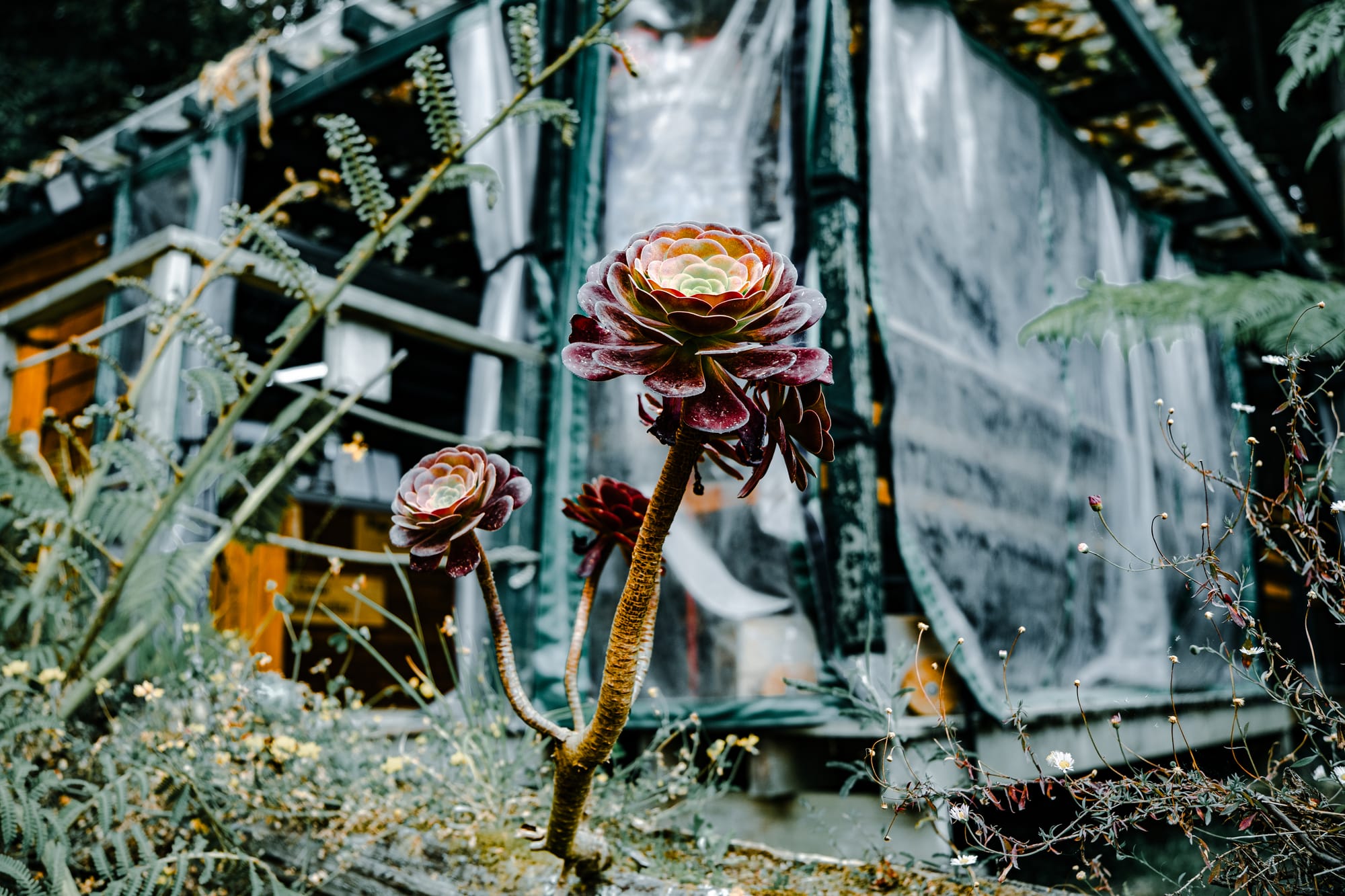
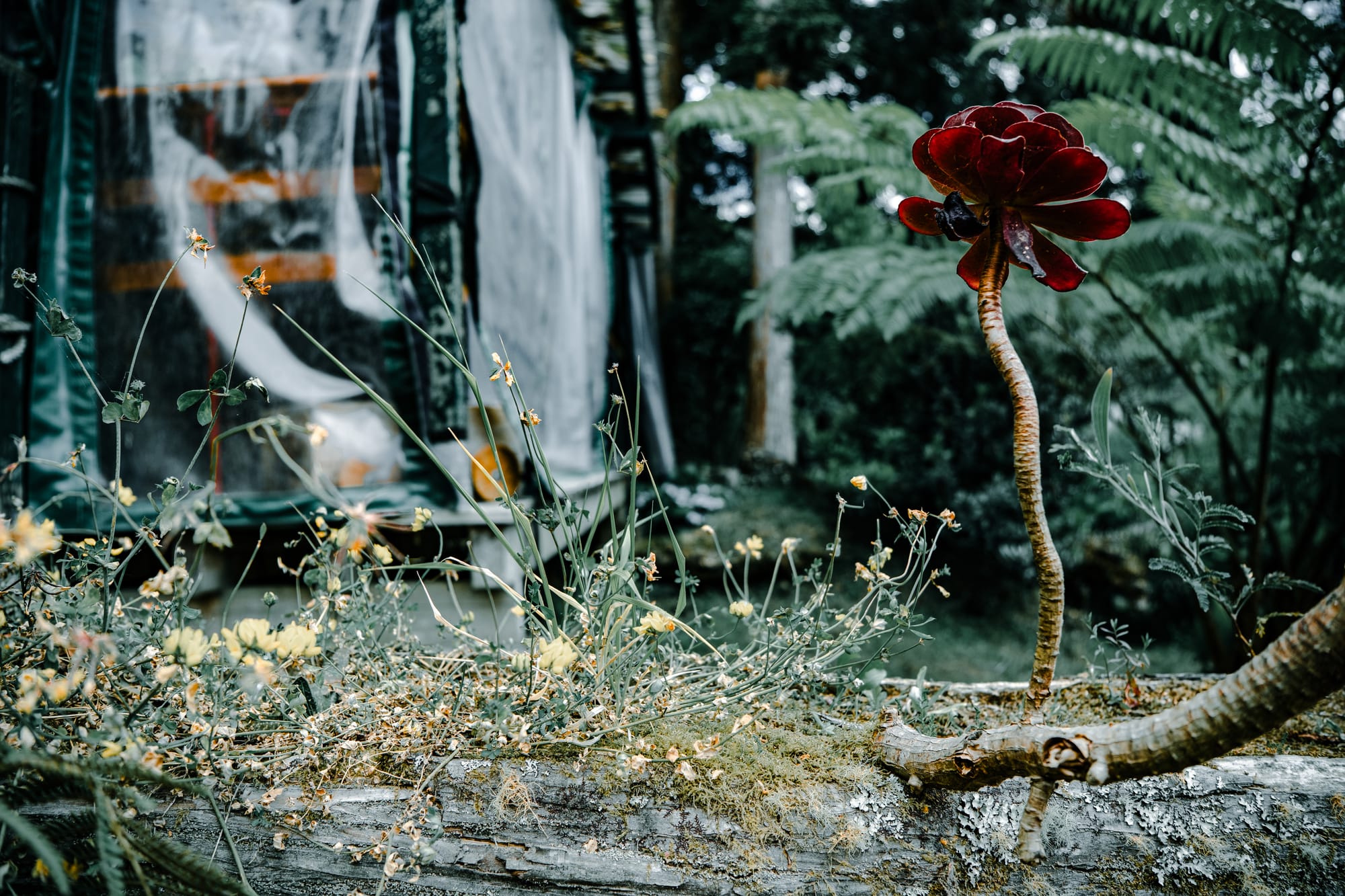
Succulents rise from mossy logs, their layered rosettes deepening in hue as they reach for the filtered light of the forest edge
Even if you don't take these trails, just standing at the threshold gives a sense of what lies beyond: quiet ravines, switchbacks, places where tree roots rise from the ground like sculpture. The path immediately hints at verticality.
The park seems to hold a different rhythm. One of the wooden signs reads "silêncio" in faded lettering. If the lake path is a public walk, Grená feels more like a hushed corridor—a portal to something slightly more wild.
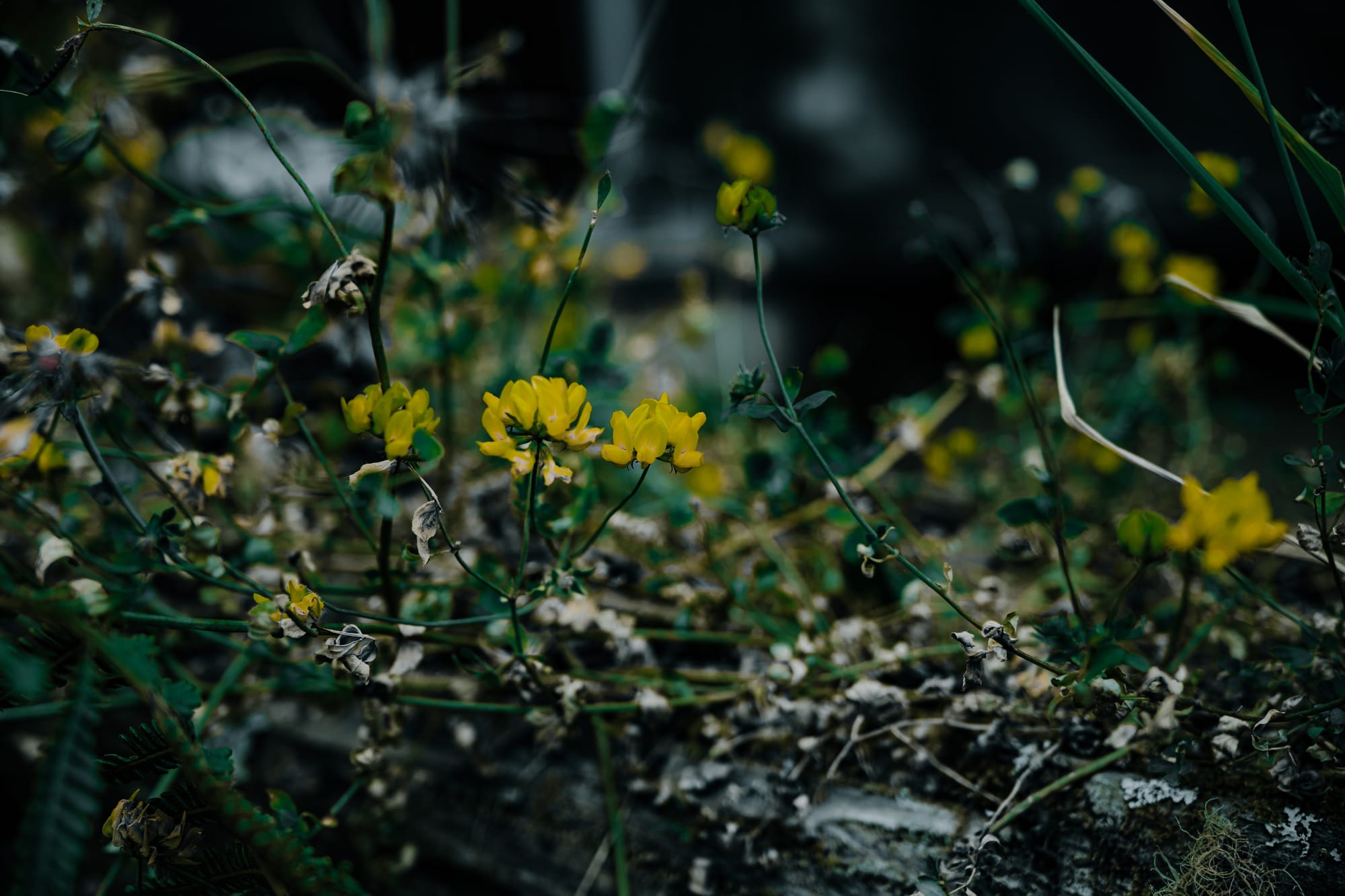
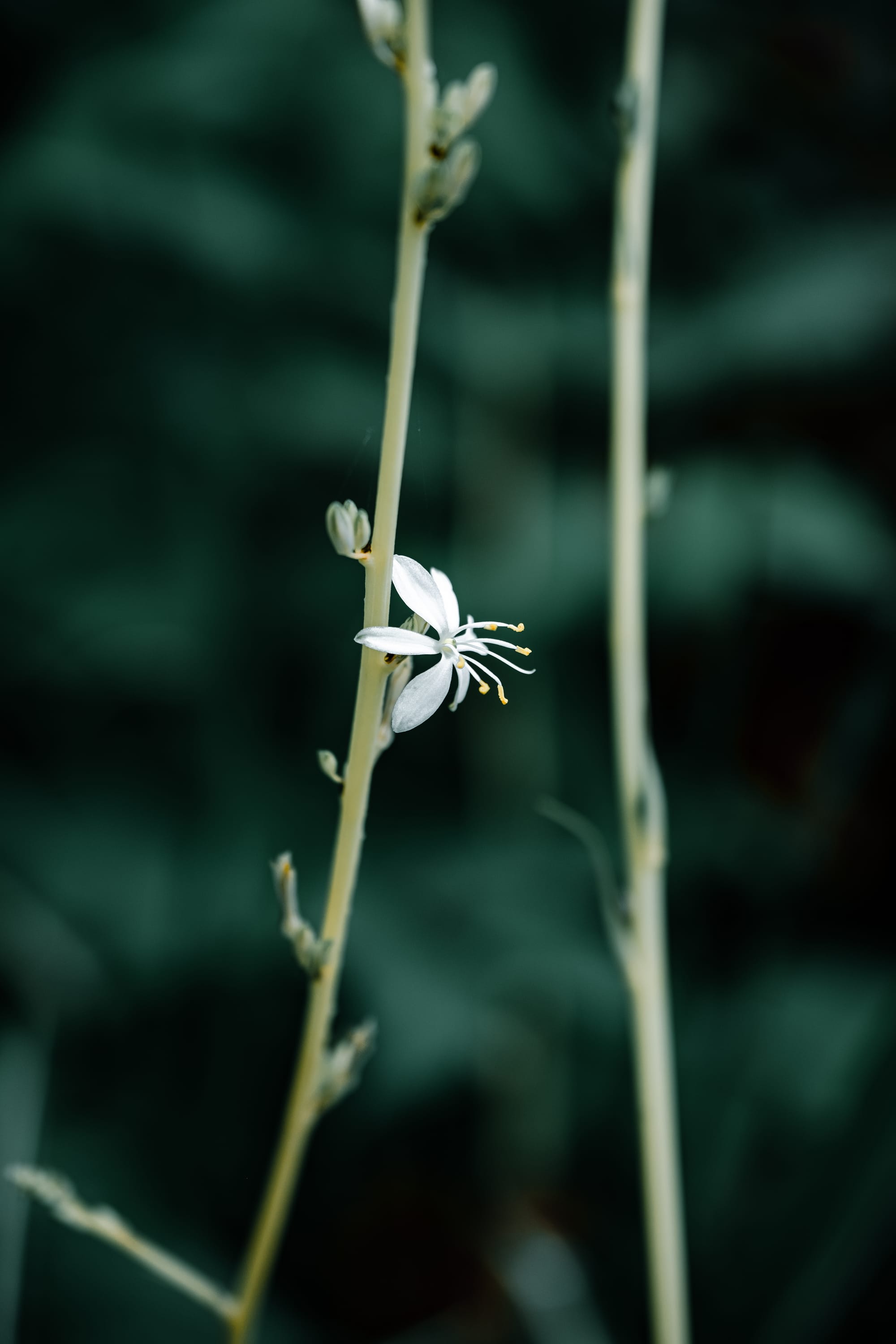
Delicate yellow bird’s-foot trefoil and a single white spider plant bloom punctuate the undergrowth with quiet precision
Photos capture this well: dark greens, angular shadows, the kind of filtered light that makes even a simple tree trunk feel sculptural.
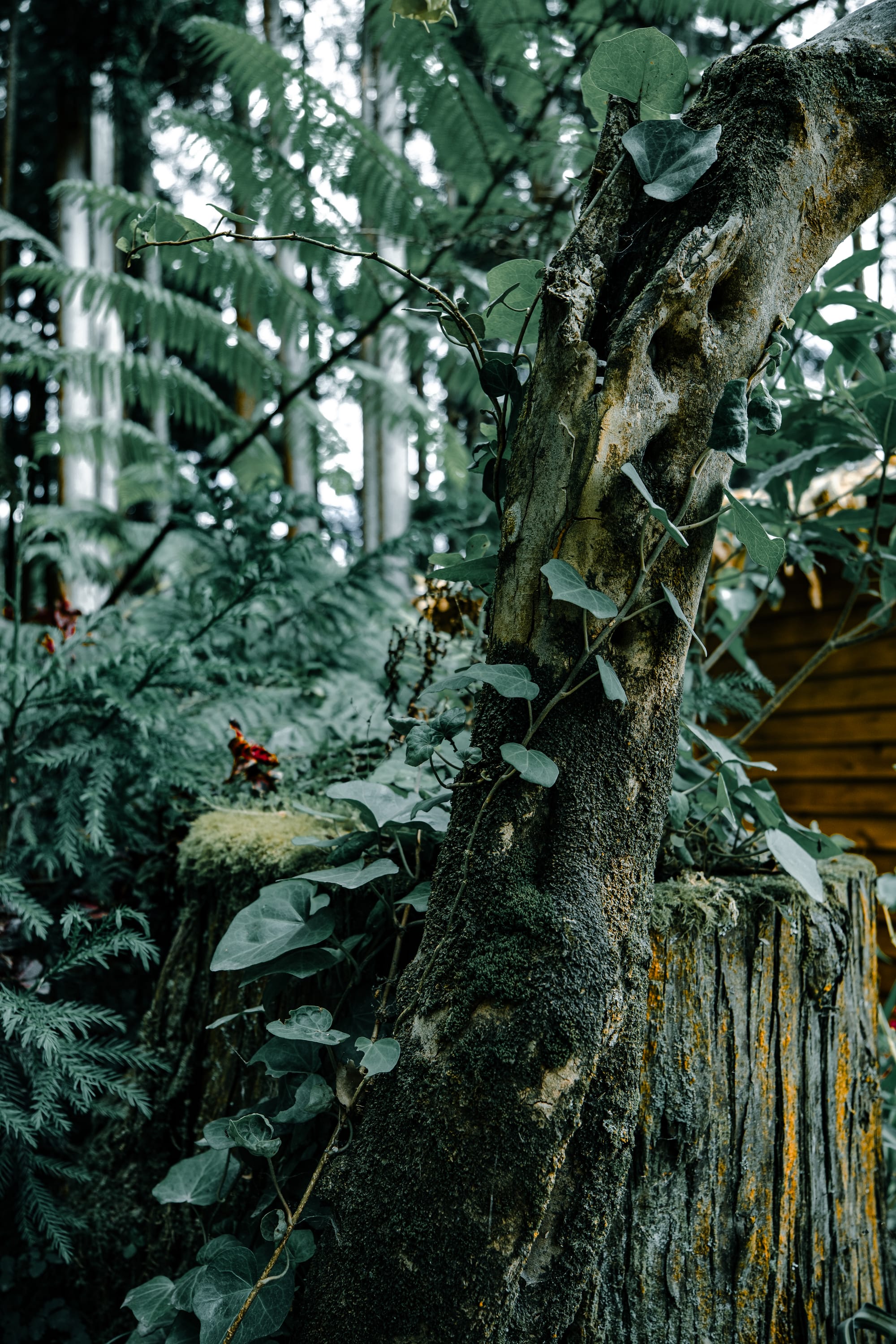
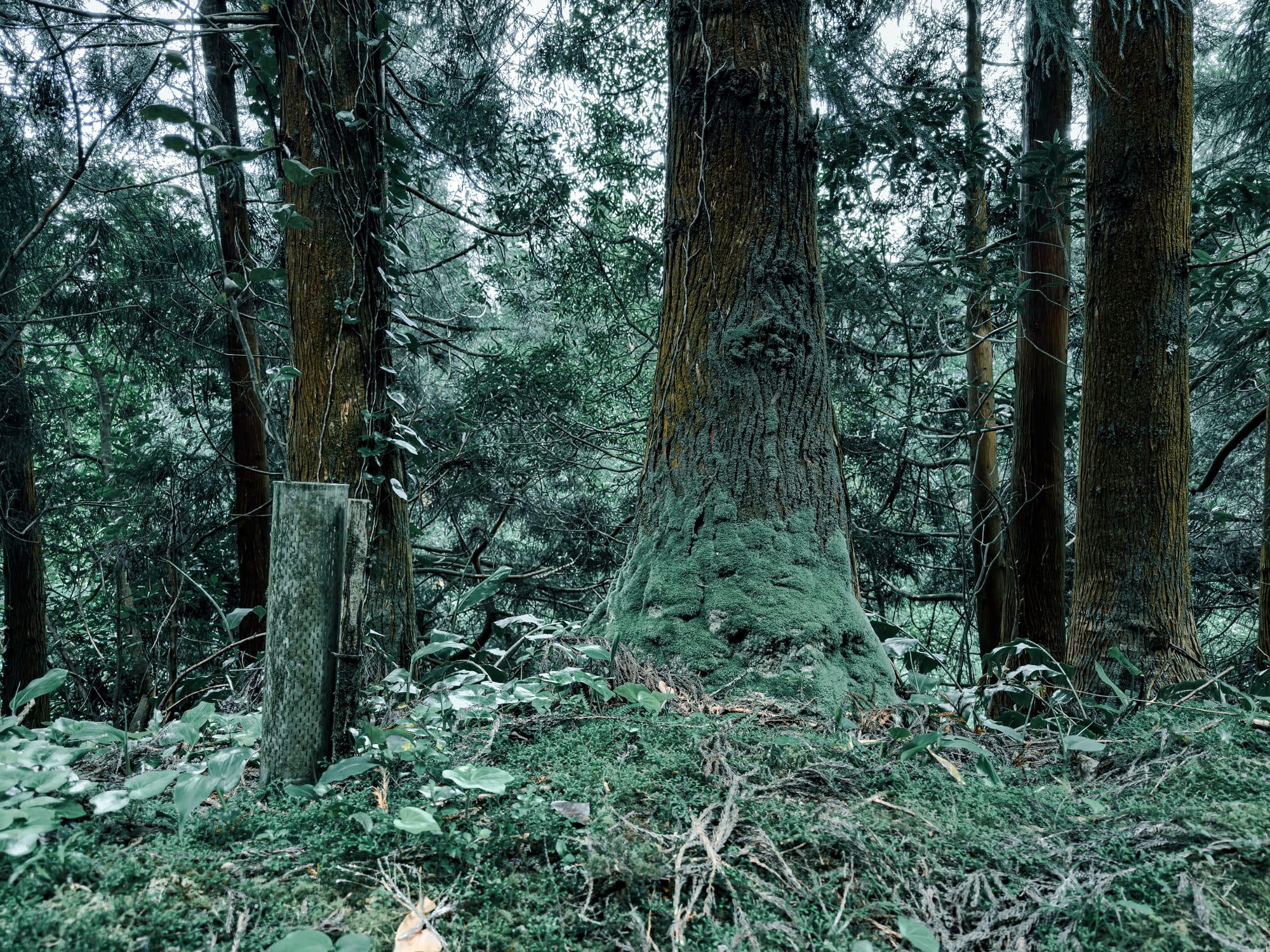
Verdant trunks and moss-thick stumps cradle creeping ivy and fern—lush evidence of Furnas’ thriving forest floor
This section of the walk deserves time. Even if you don’t enter fully, lingering at the gate, noticing the slight drop in temperature, the shift in light, the way the sounds change.
And if you do enter, here's a small preview of what you might find. The below photos in this section are courtesy of a Lava coliving friend who made it there!
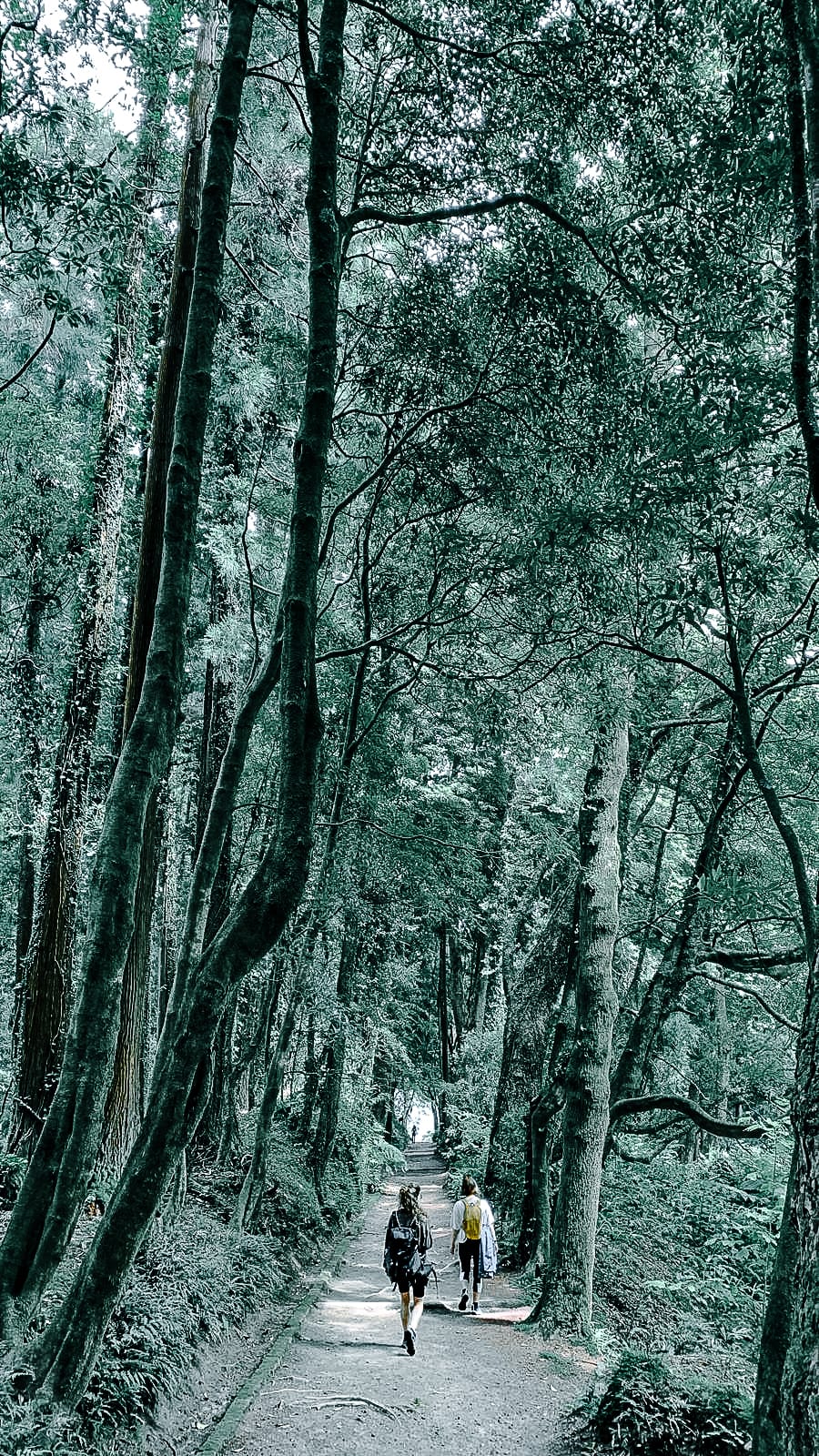
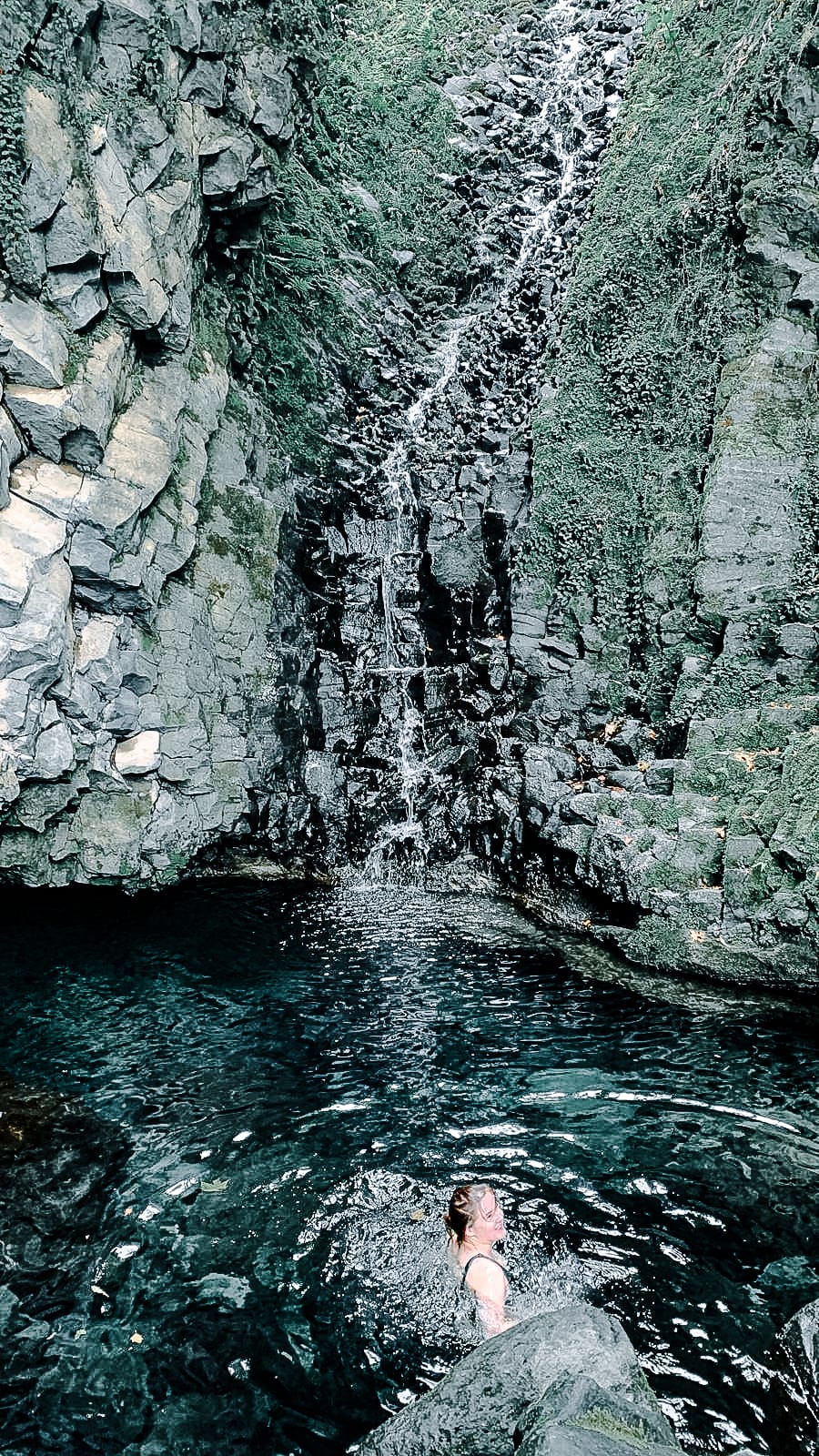
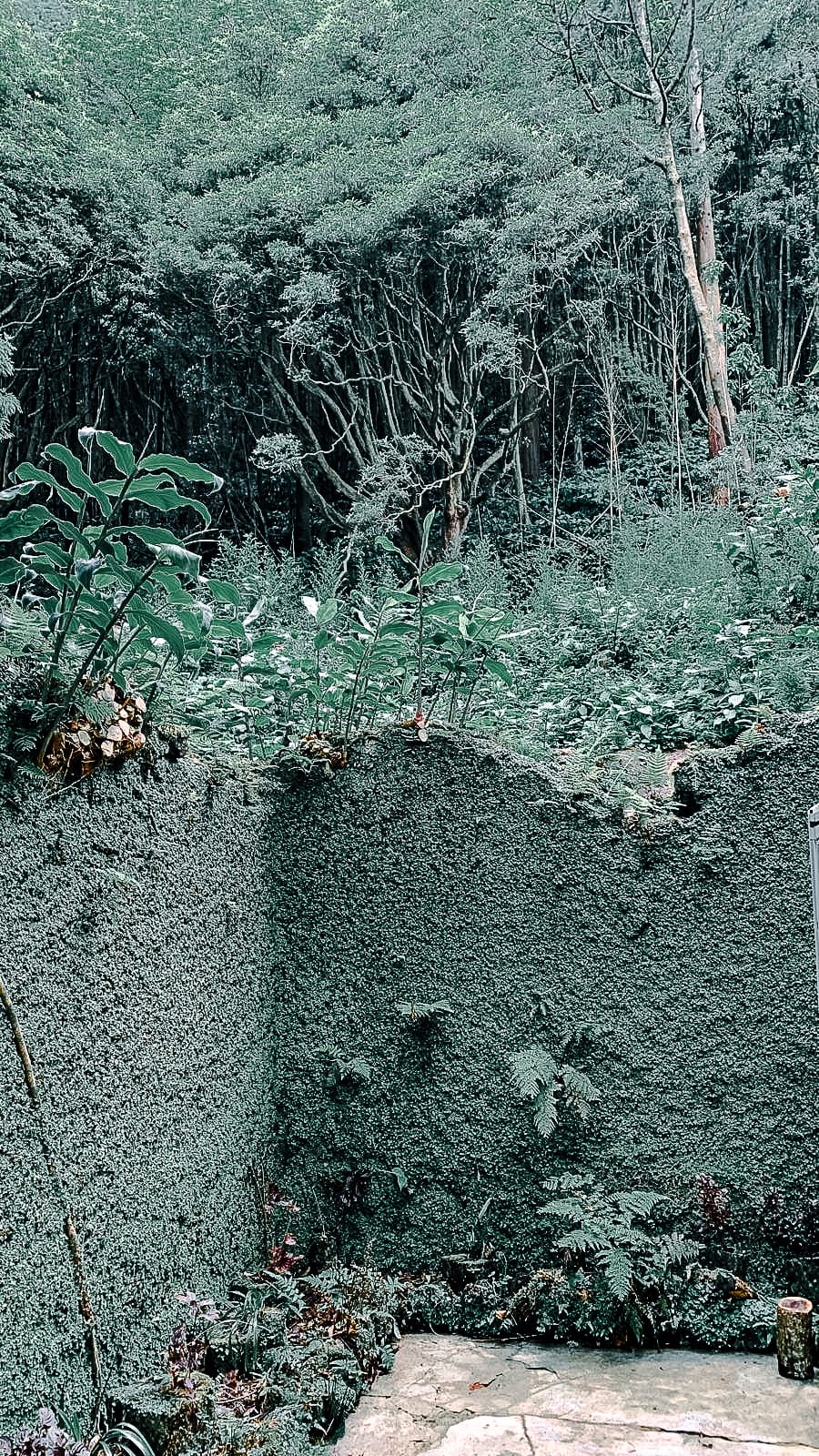
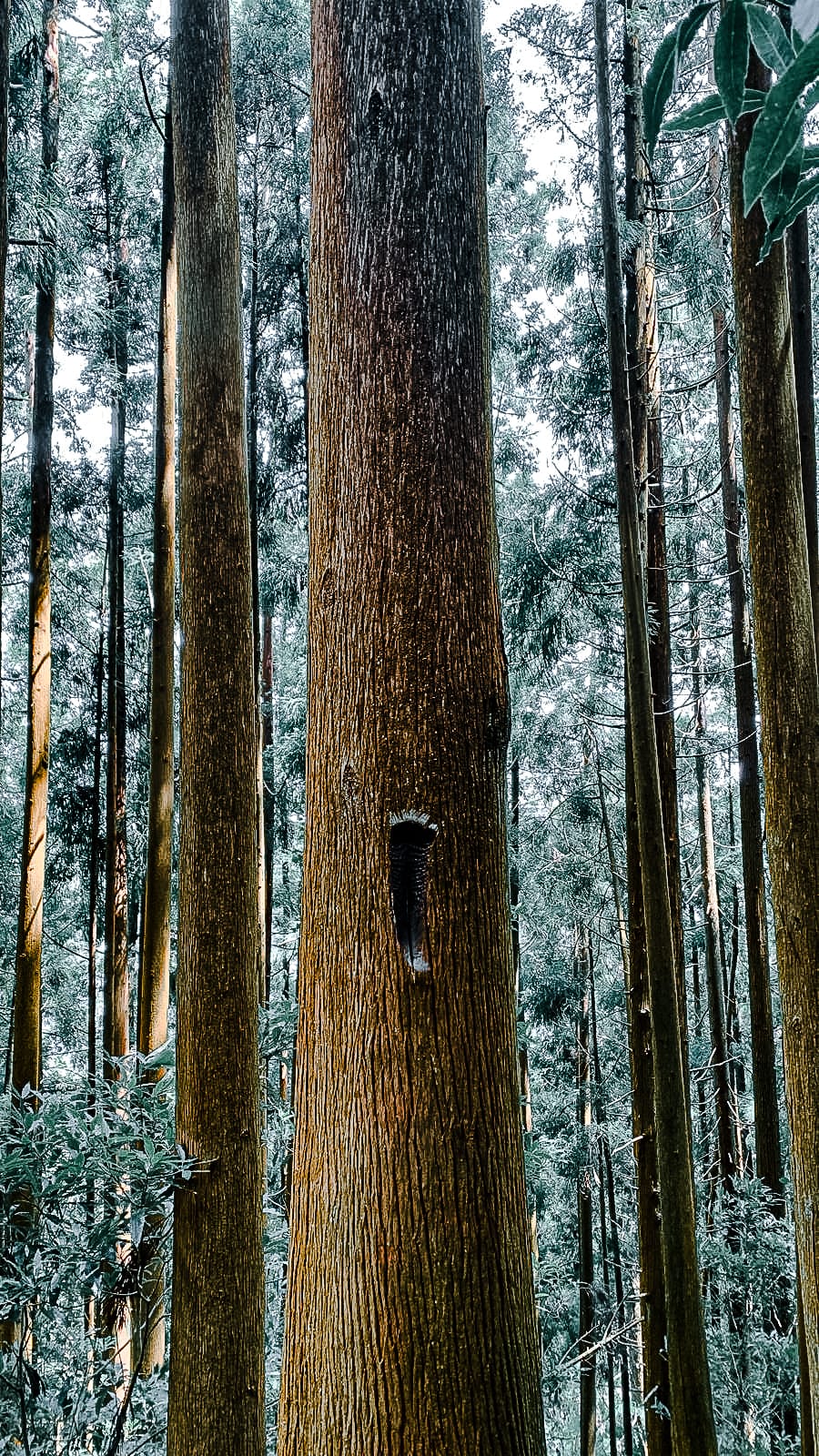
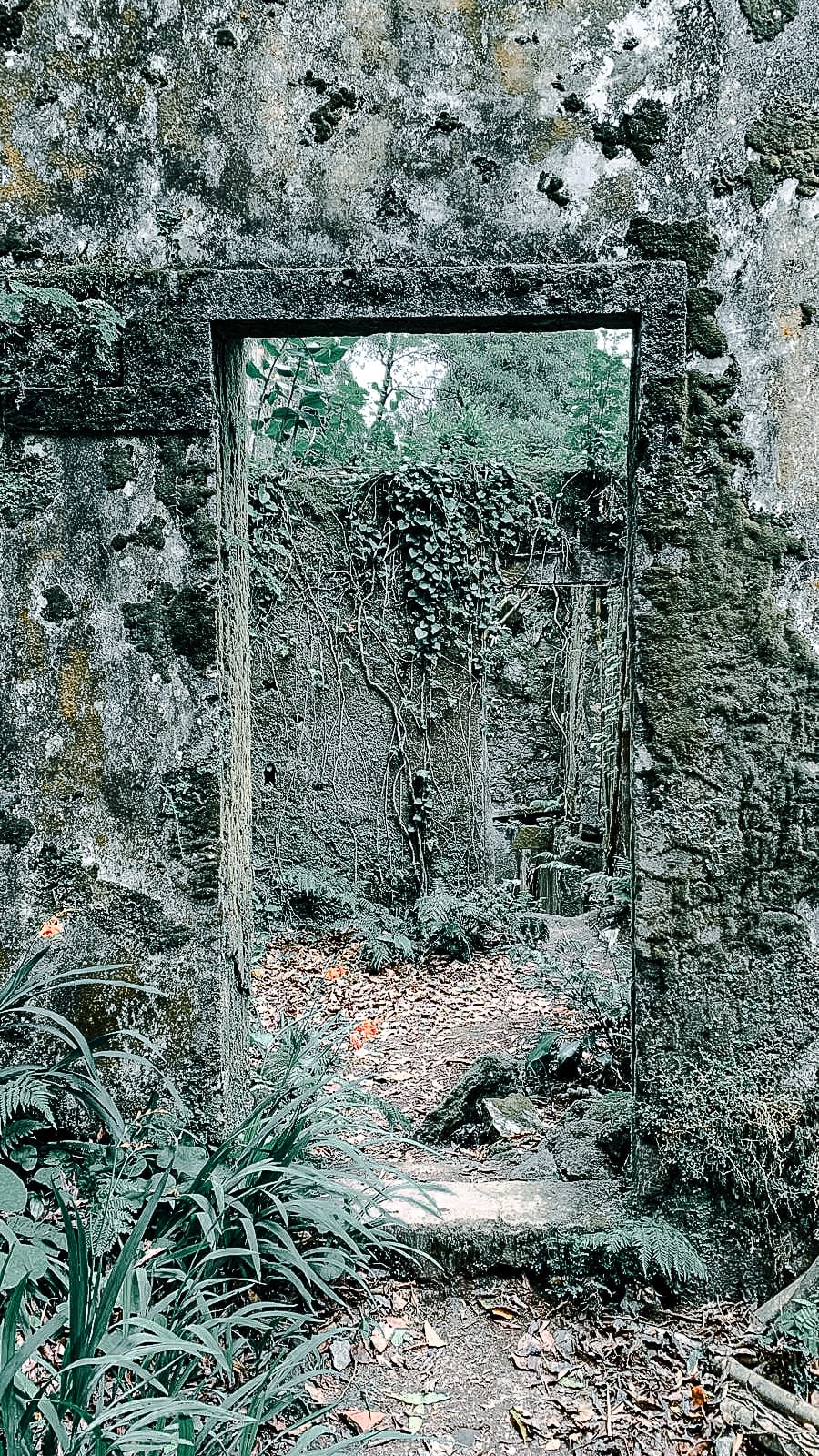
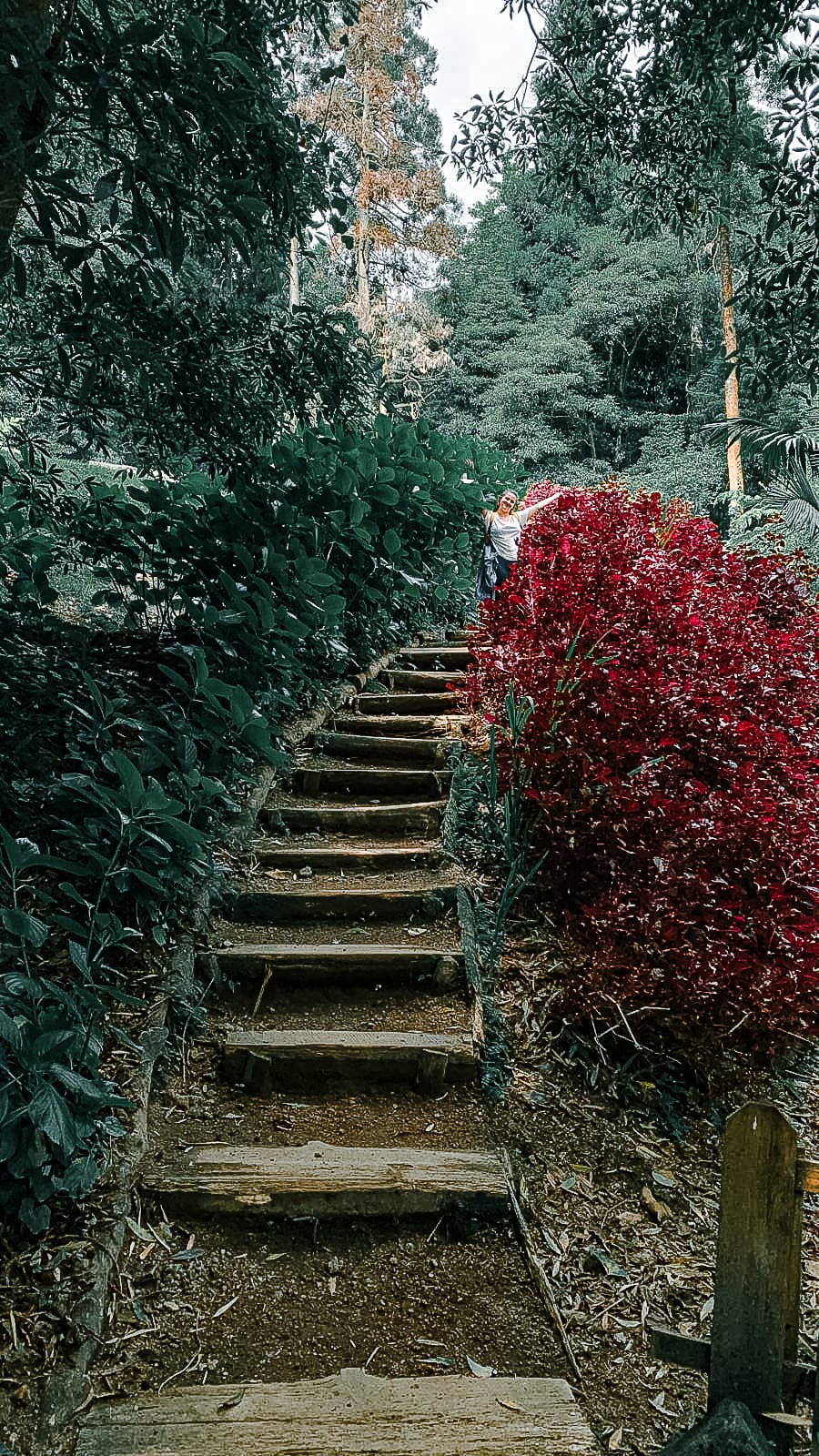
Quiet trails through Parque da Grená lead past dense forest, spring-fed pools, and moss-covered ruins
While we never made it ourselves, our friends from Lava Coliving highly recommended this trail.
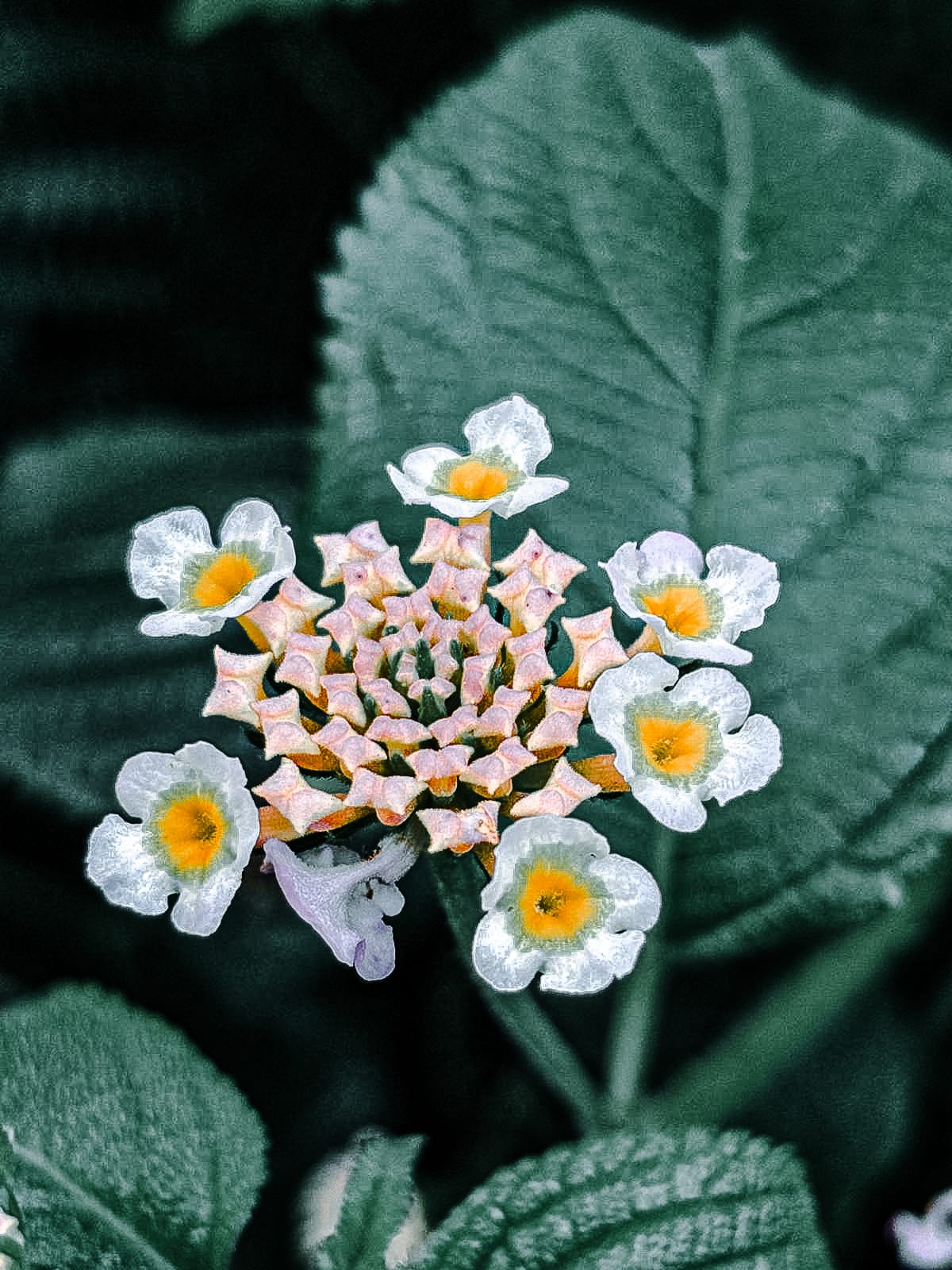
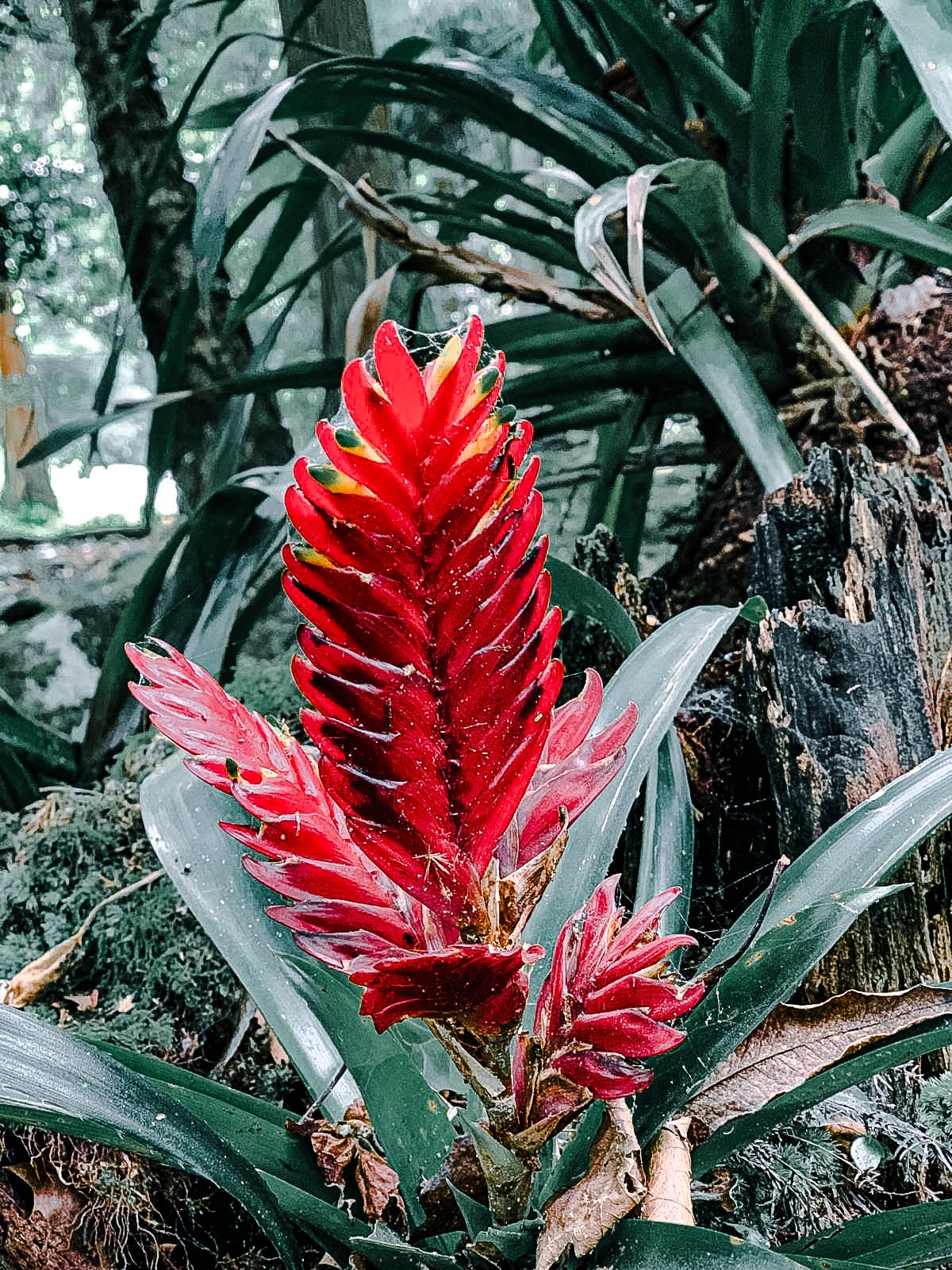
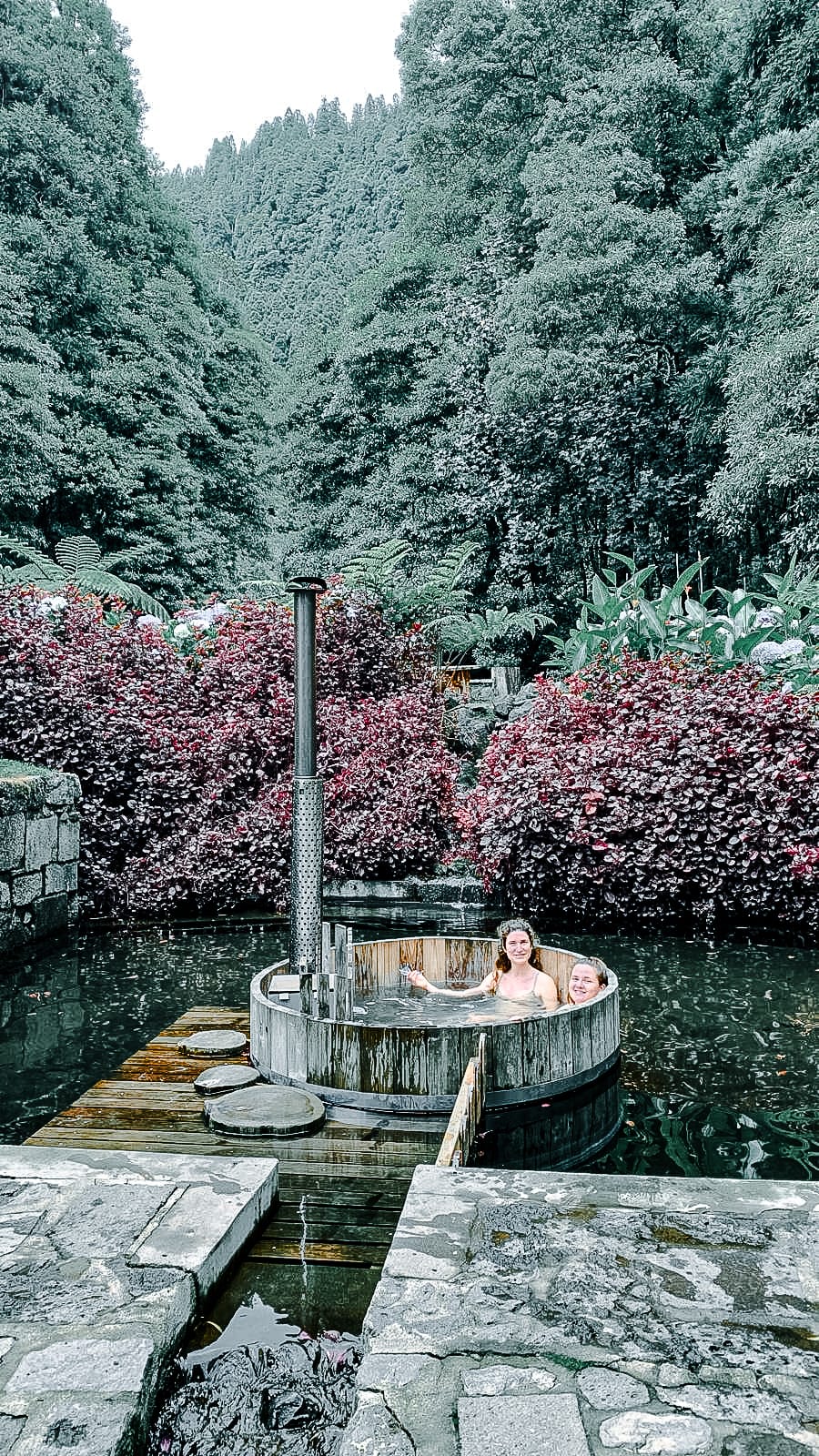
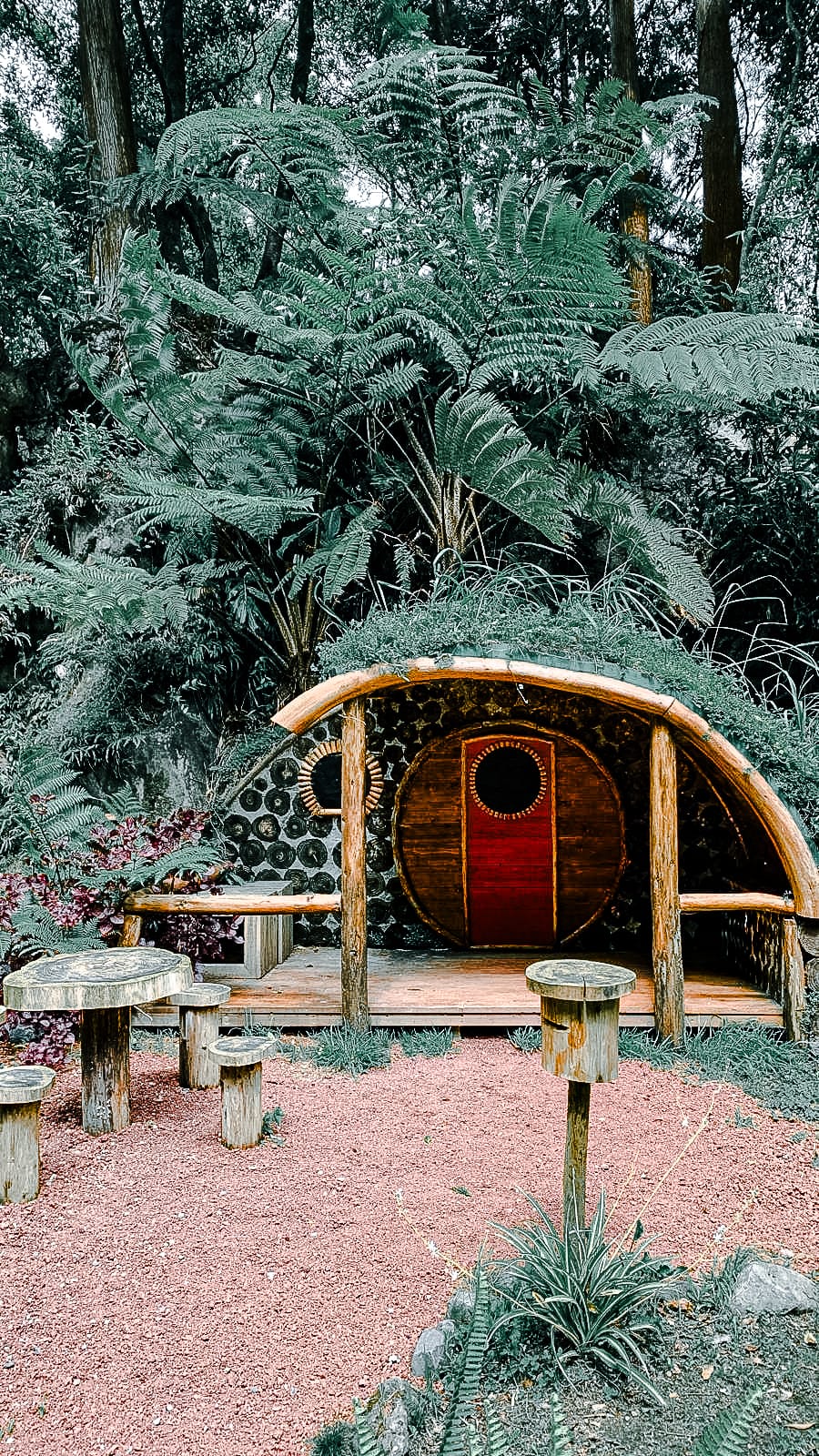
A forest clearing at the end of the trail reveals warm thermal tubs and a hobbit-like hut tucked into the hillside
They very much enjoyed the hot tub at the end.
Looping back
The Furnas lake trail closes gradually. You’ll begin to recognize what you’ve already passed. The light may have changed. Ducks will have shifted. The smell of eucalyptus might be sharper, or the air warmer. A soft wind moves across the lake, and the far side looks suddenly closer.
This is one of the most accessible and layered walks in São Miguel—a way to attune to the island’s interior, its plant life, its waterlines, its quiet endurance.
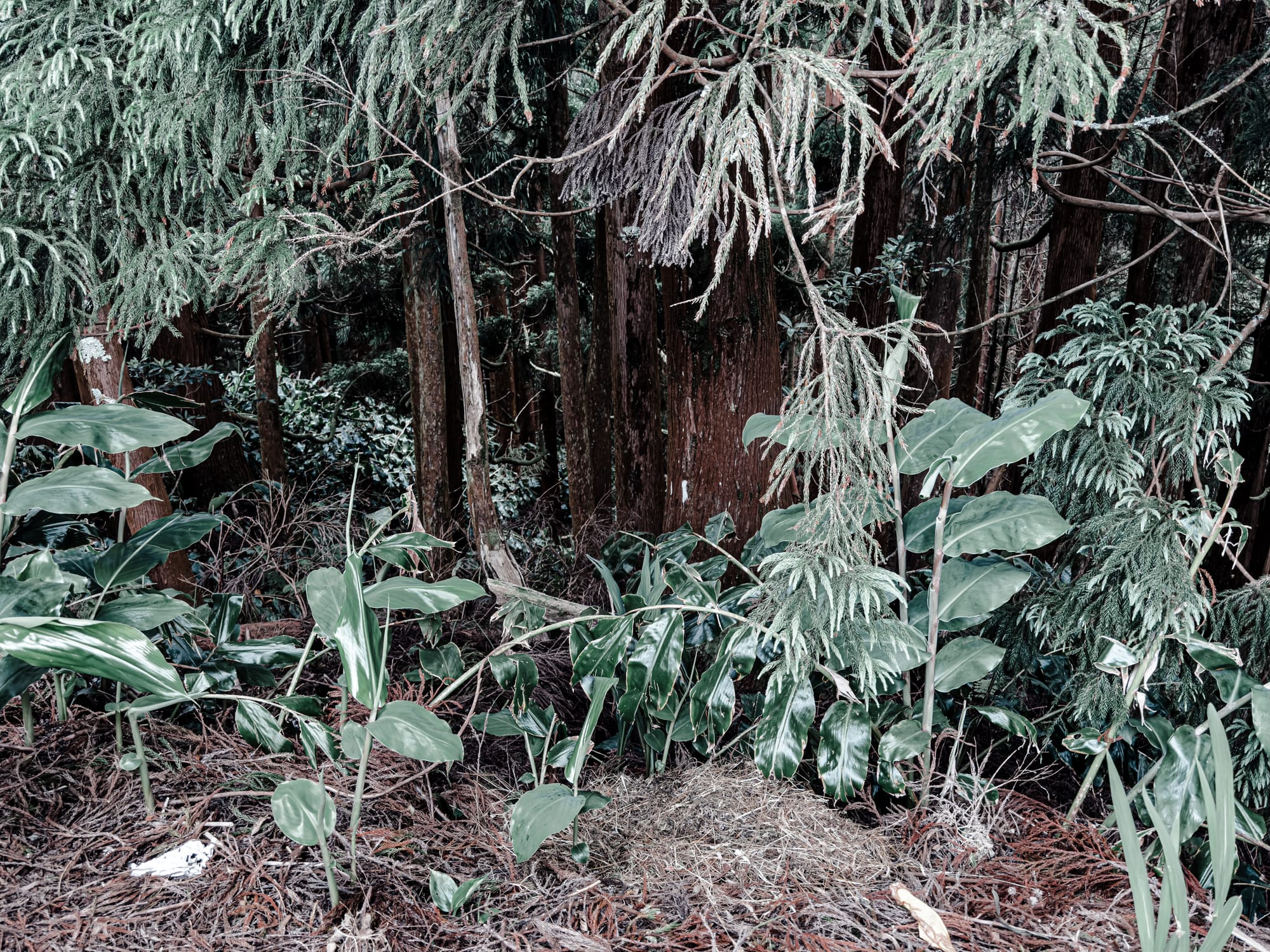
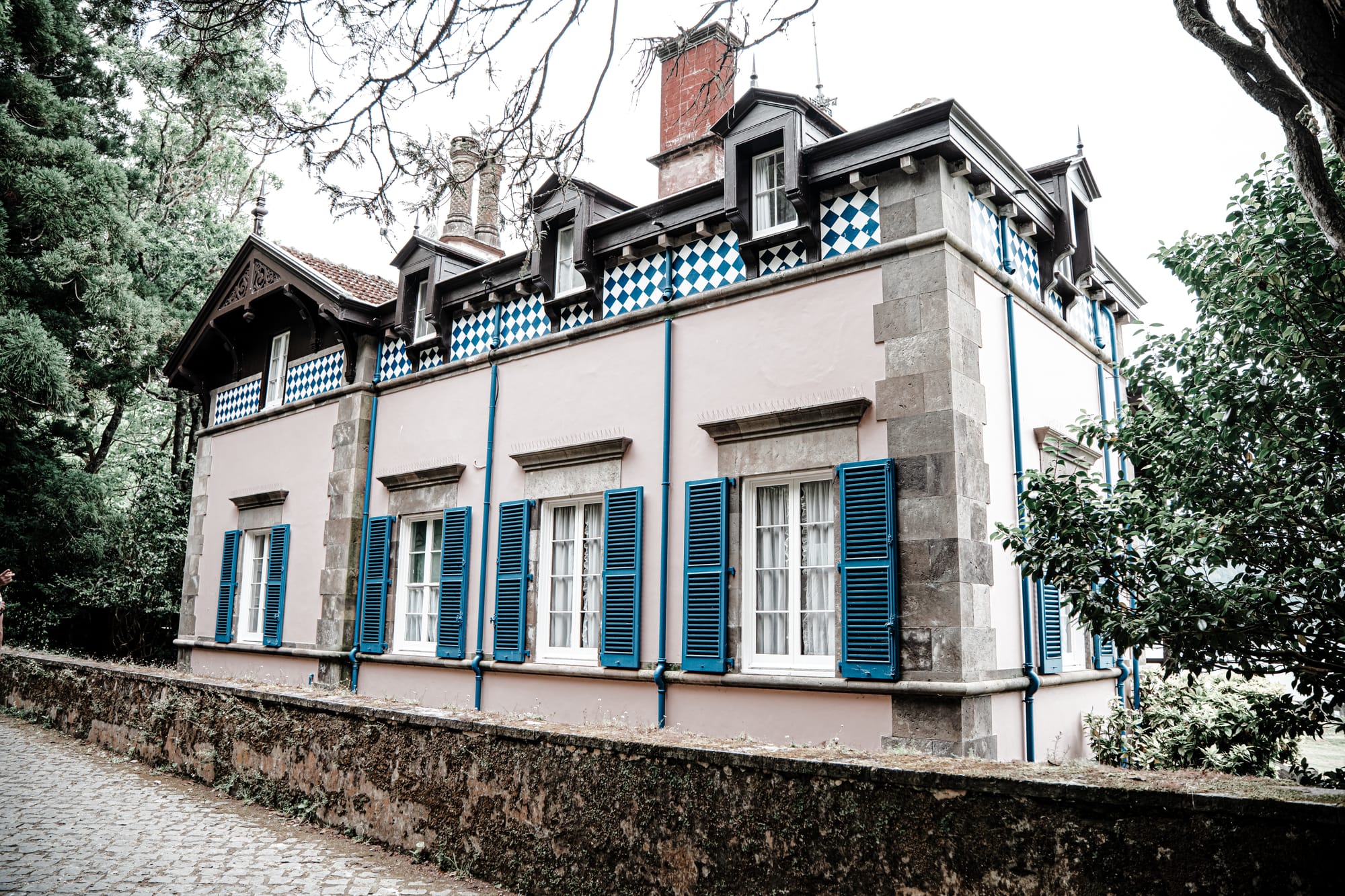
Verdant forest undergrowth gives way to a pastel mansion trimmed in blue—where jungle meets architectural whimsy
If you stay longer, there are more trails that lead out from here—up to Pico do Ferro, or deeper into the forest. But even just the loop around the lake holds more than enough. It’s a walk best done unhurried. A half-day with plenty of pauses. Time expands here.
A good pair of shoes will help. So will taking your time. And if you want to explore more, this is only one of many trails leading out from Furnas.






